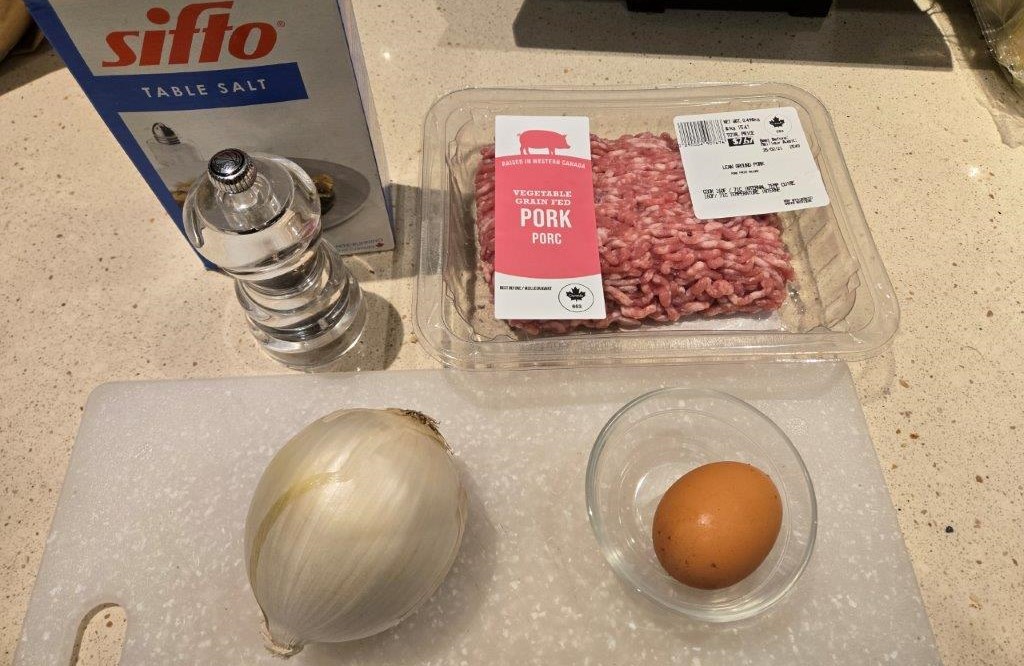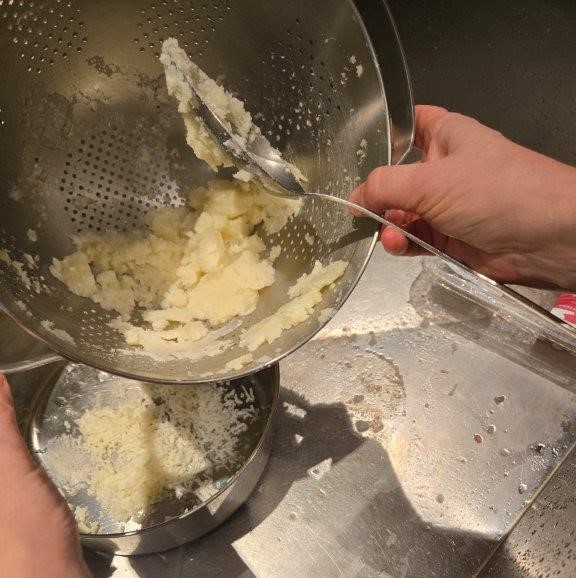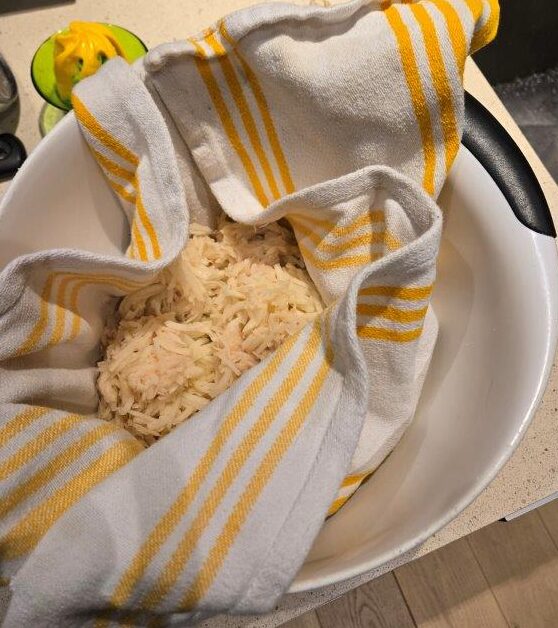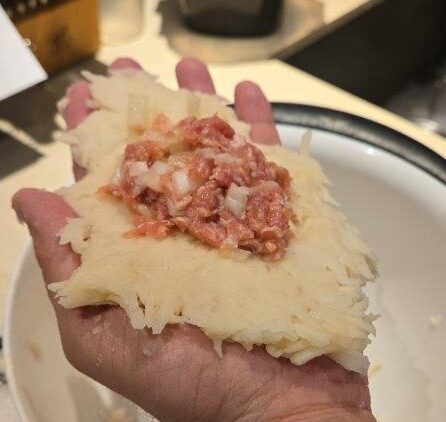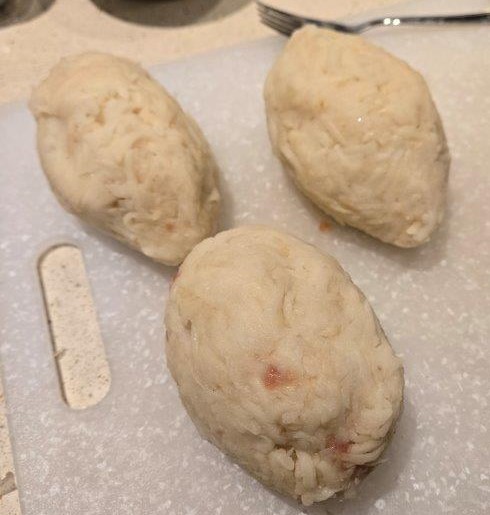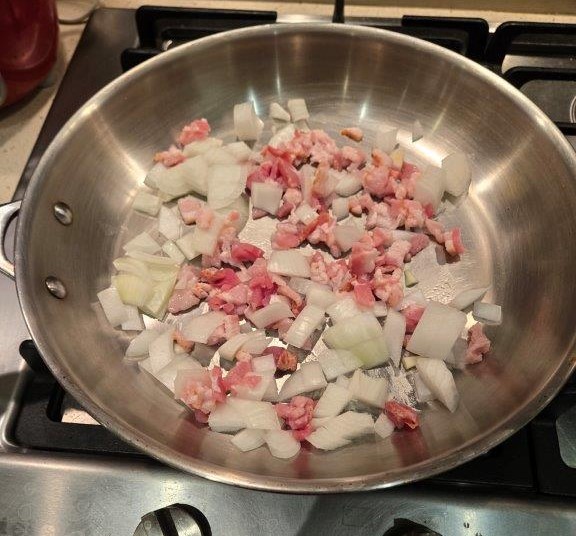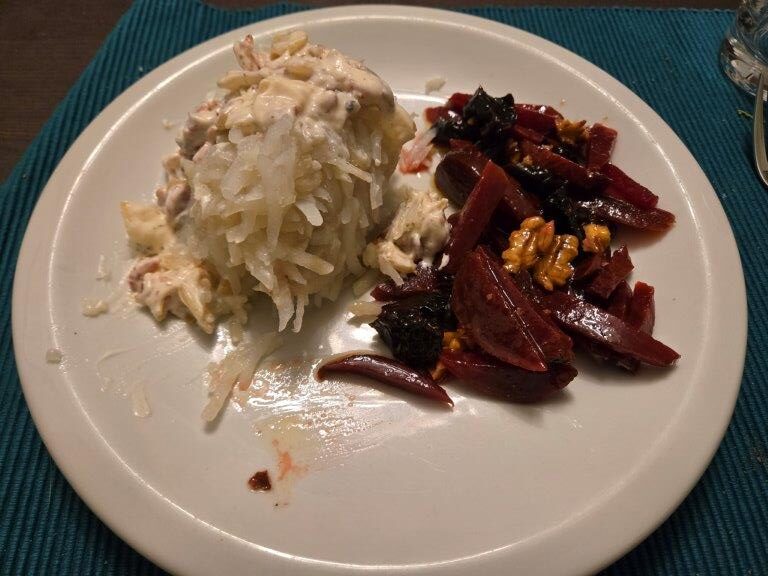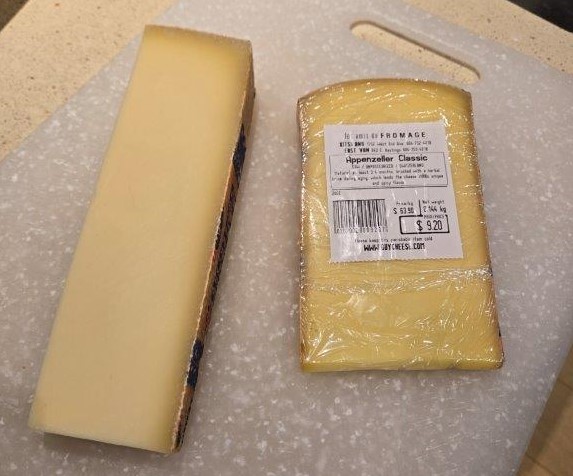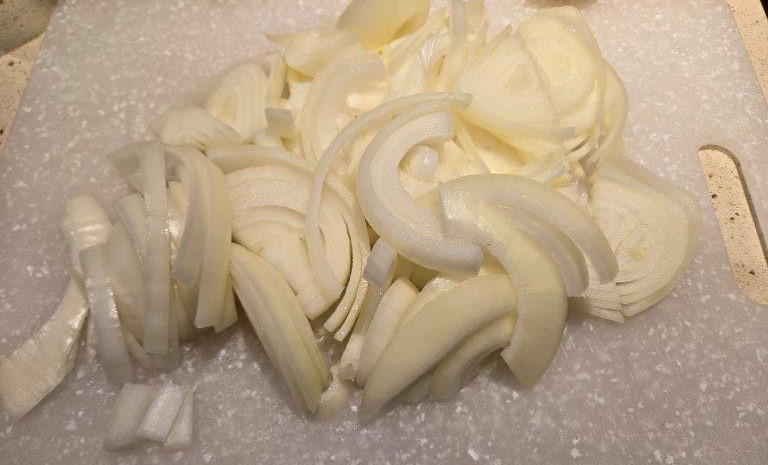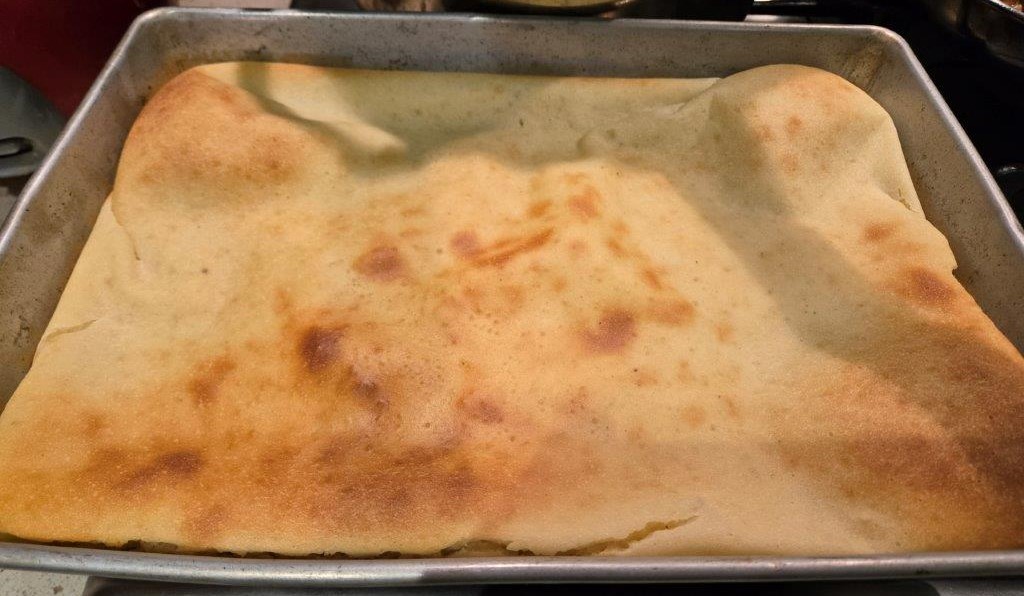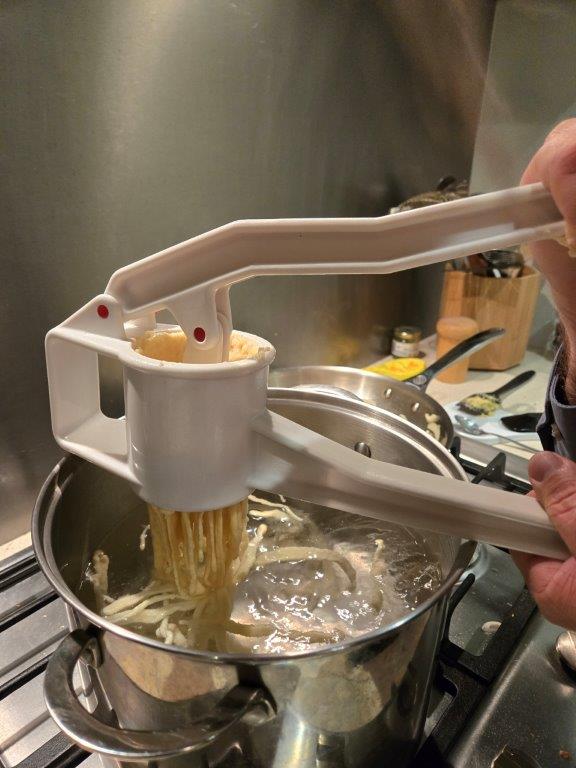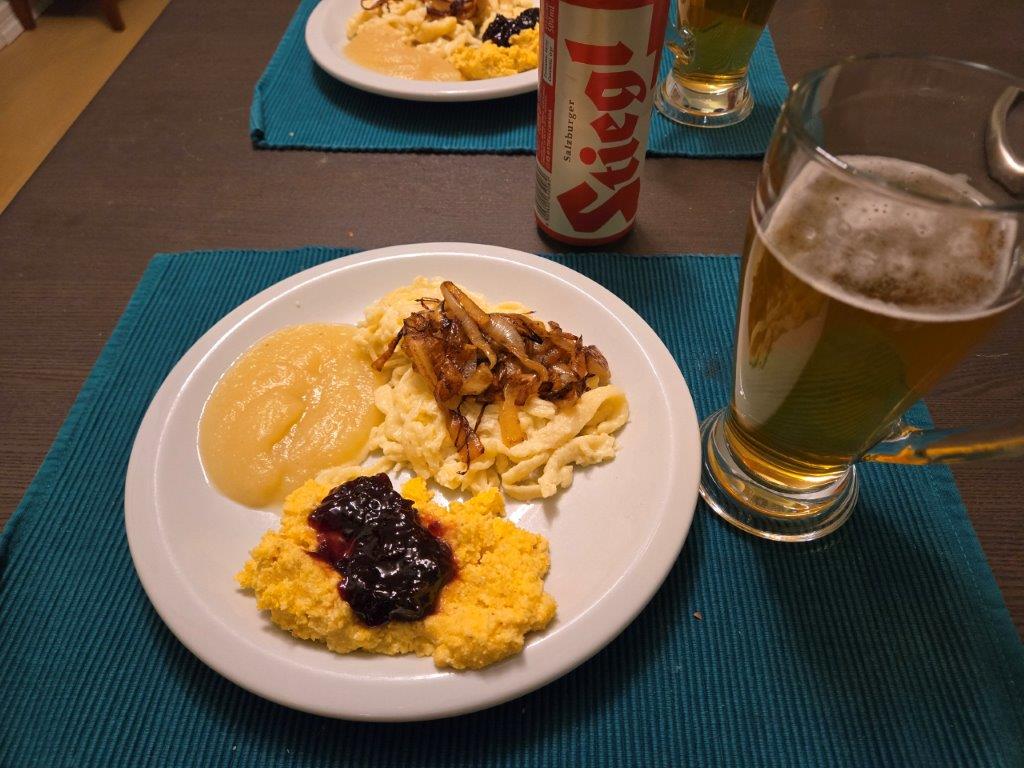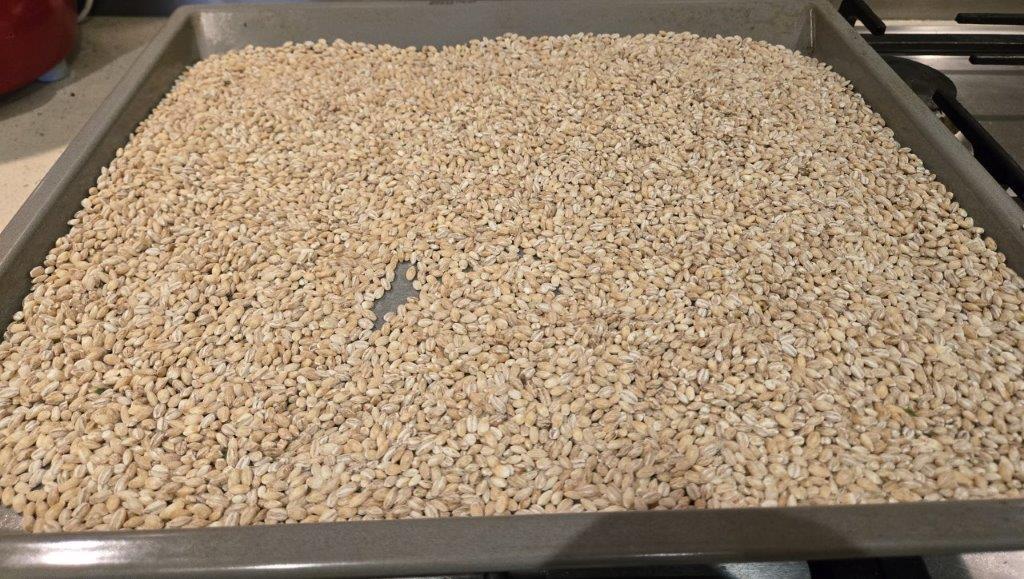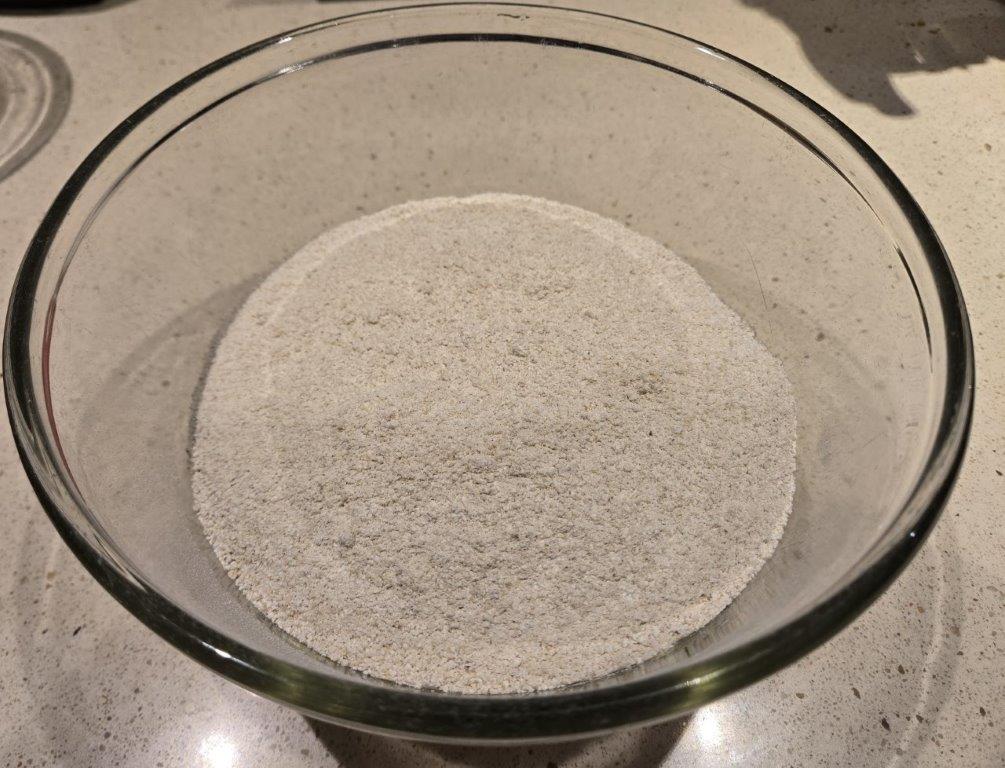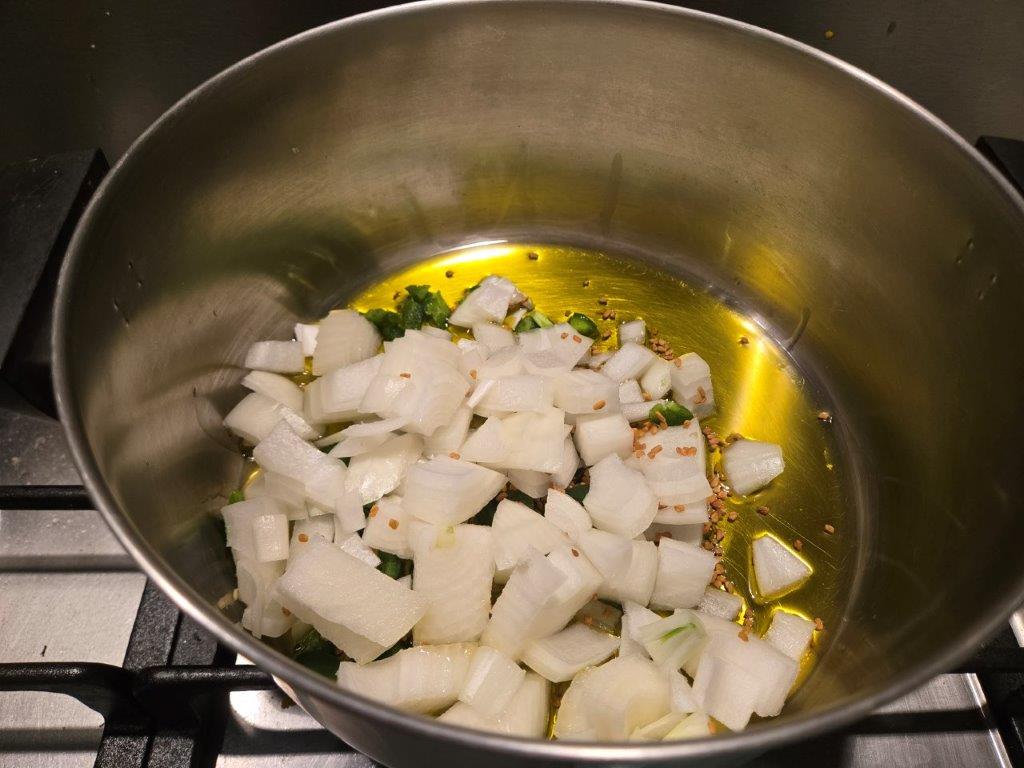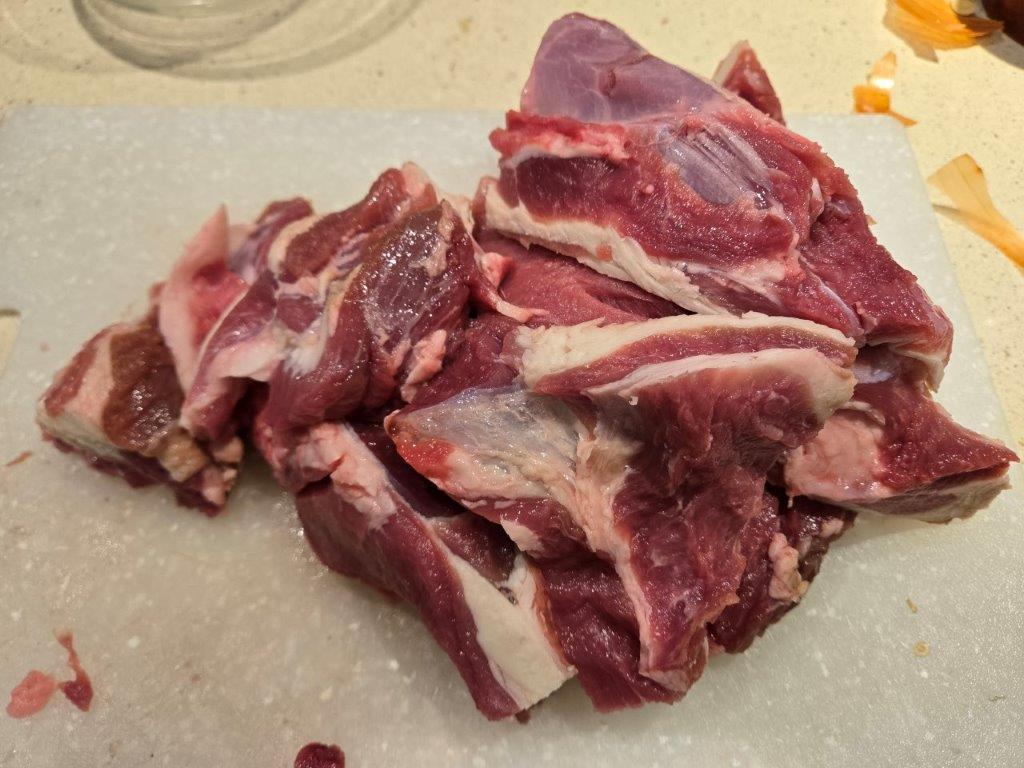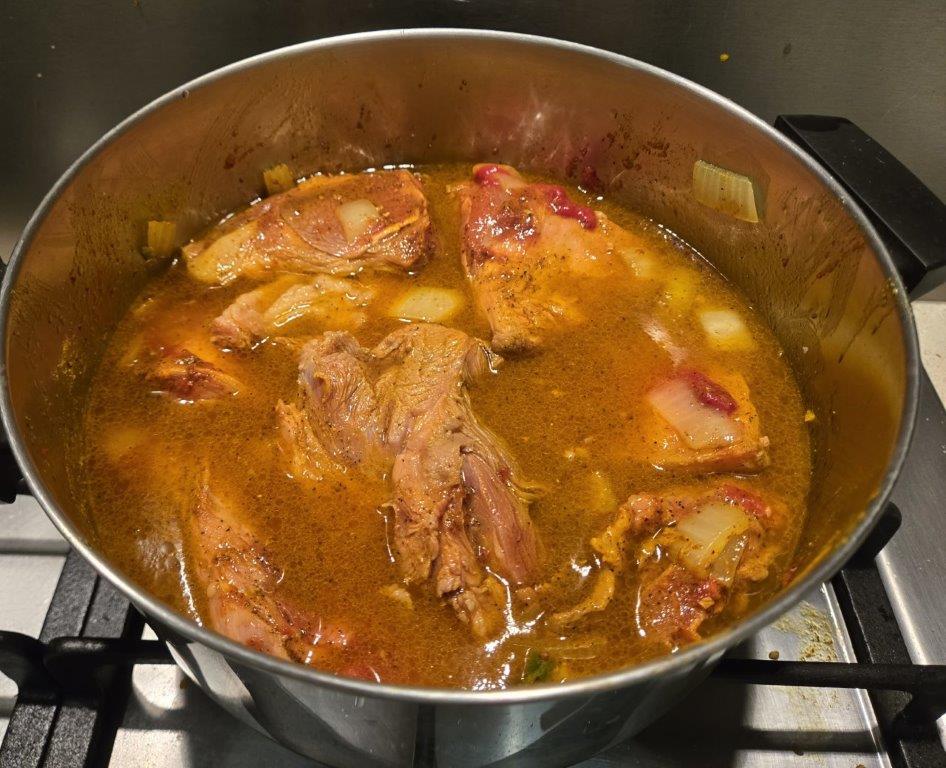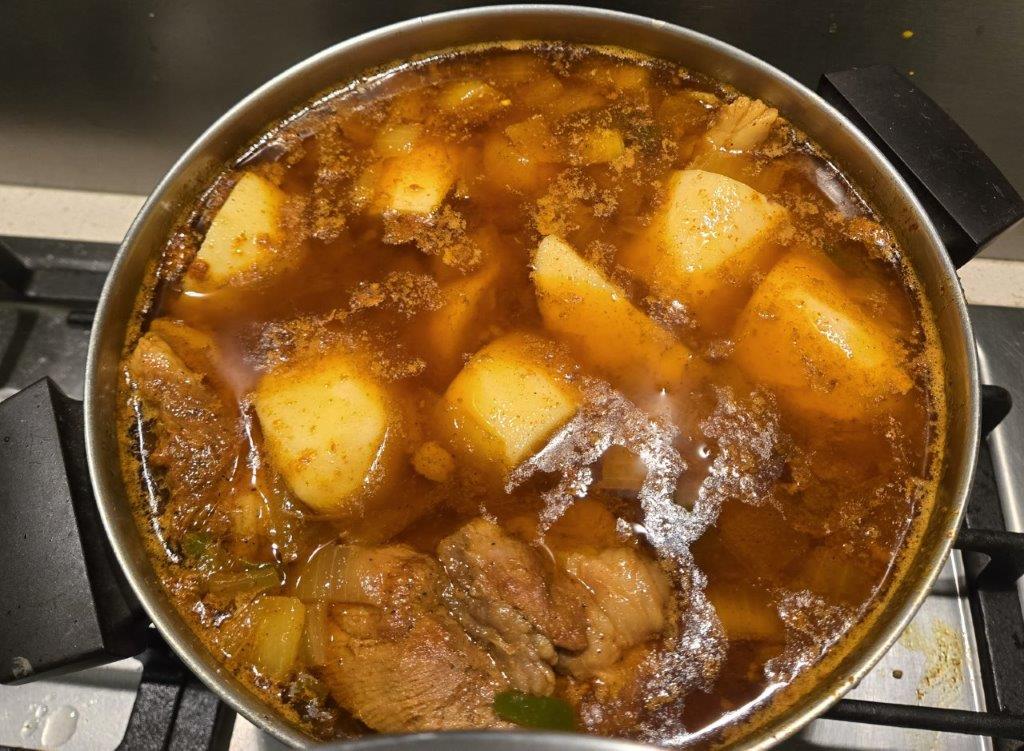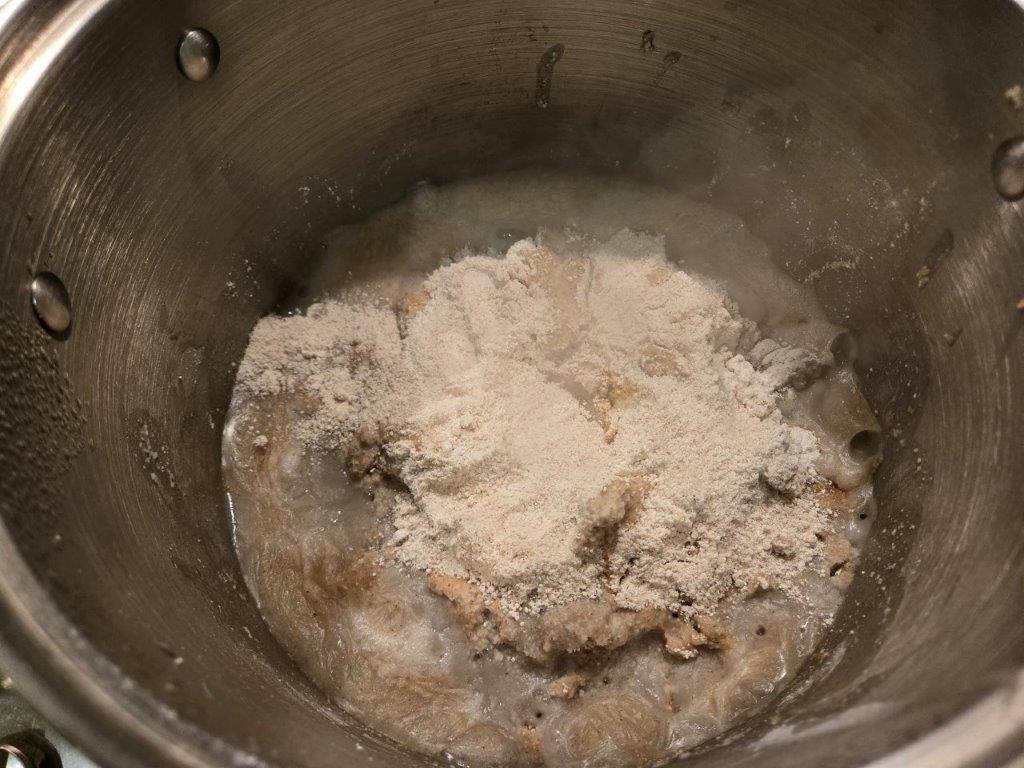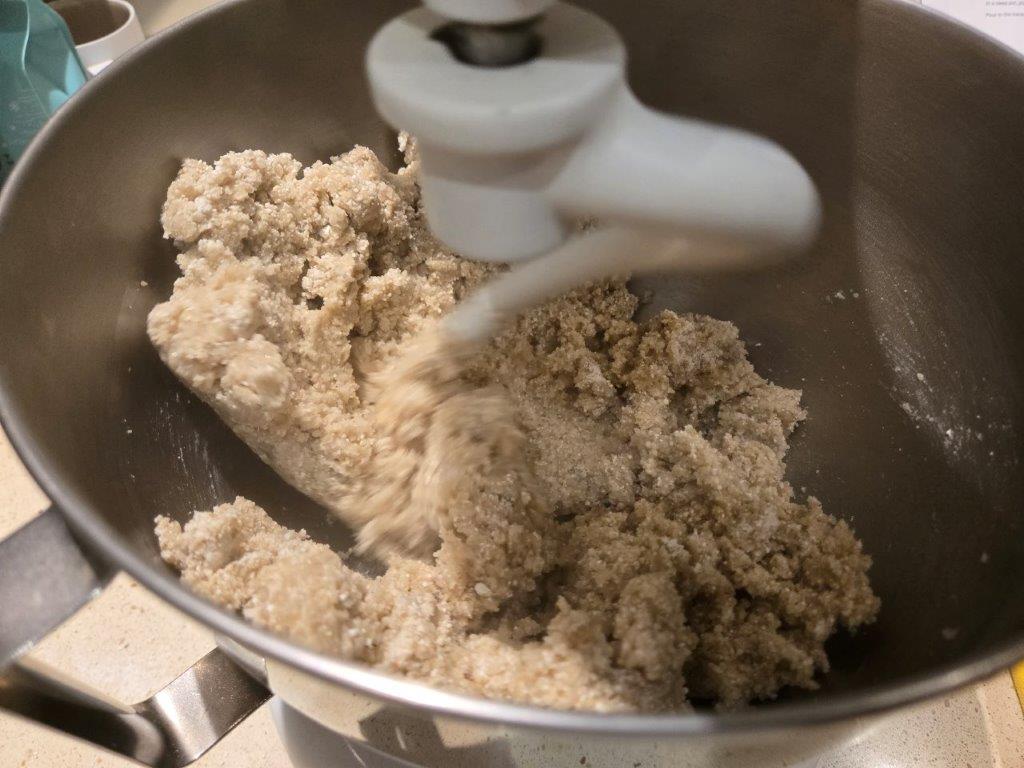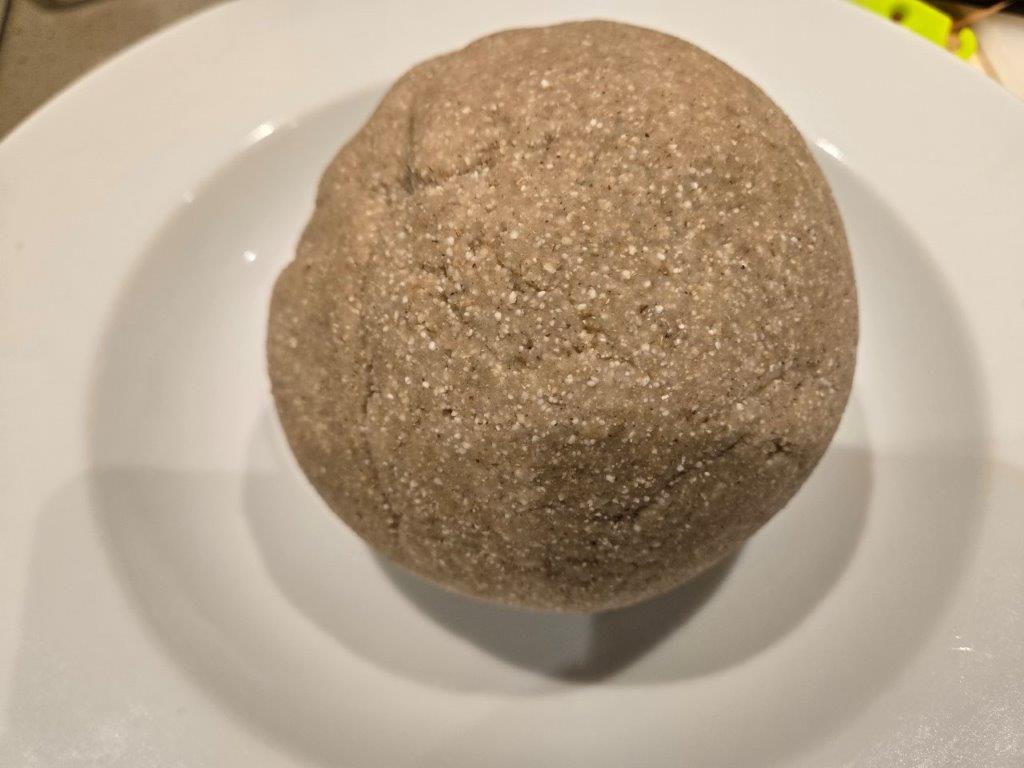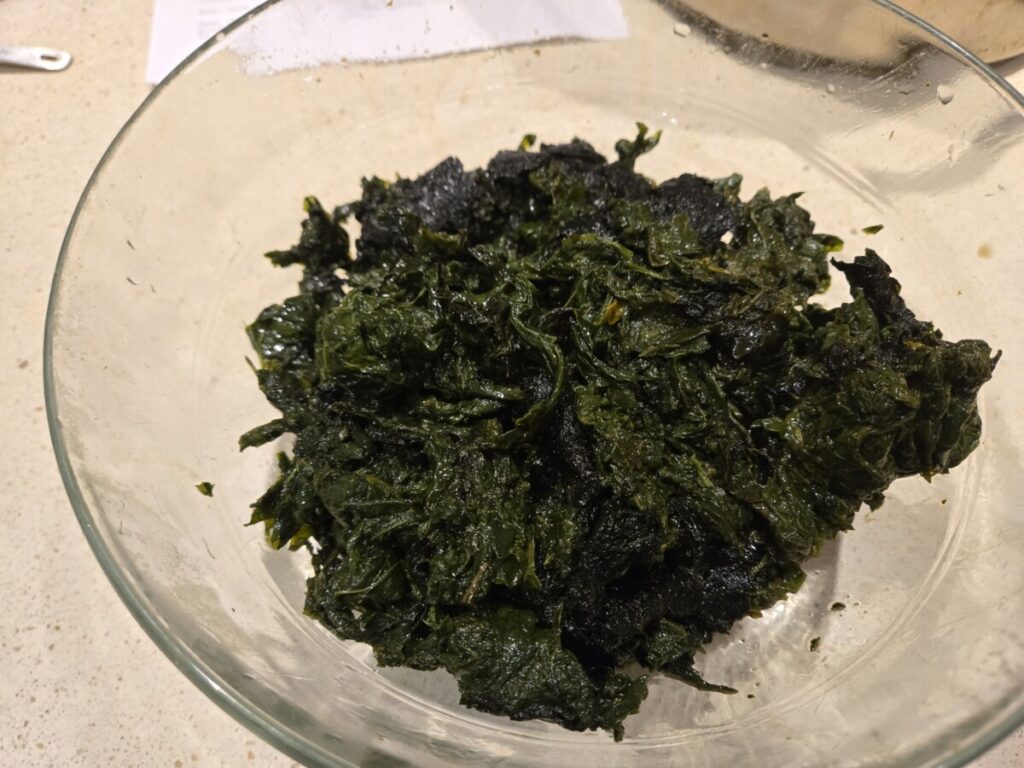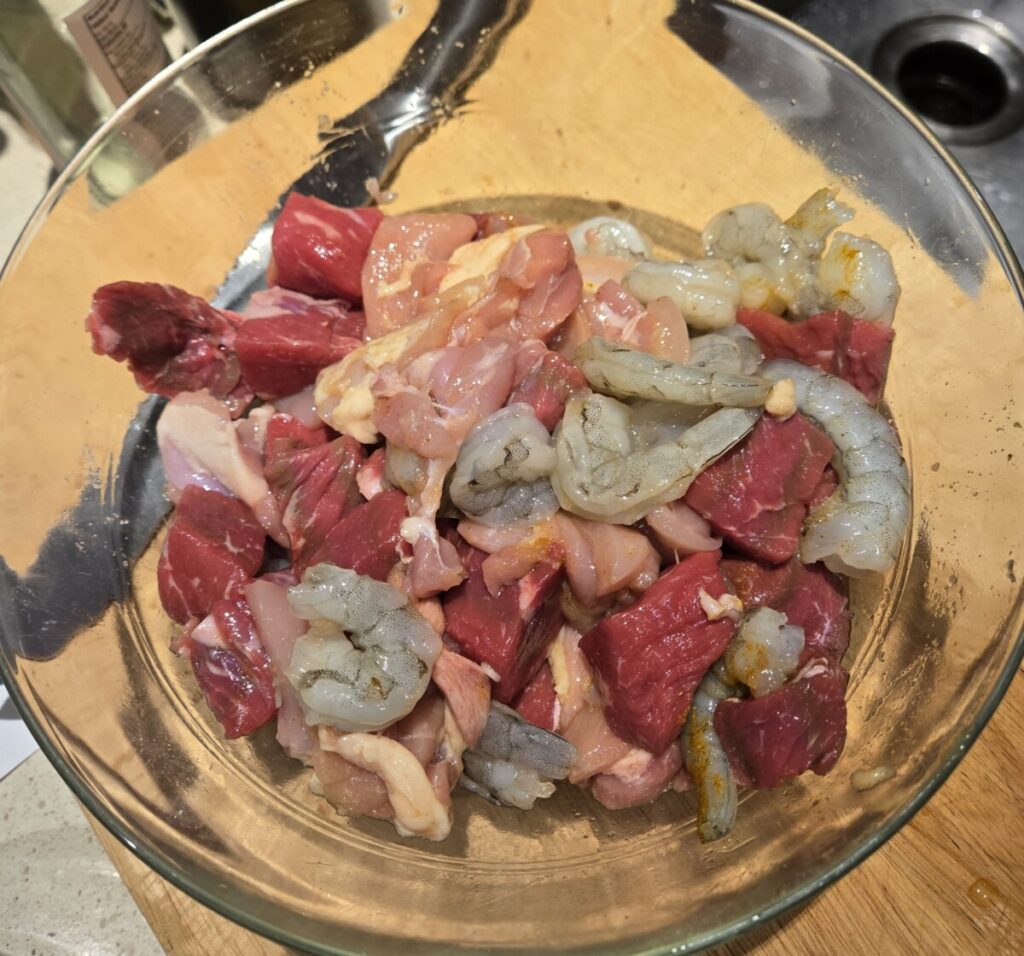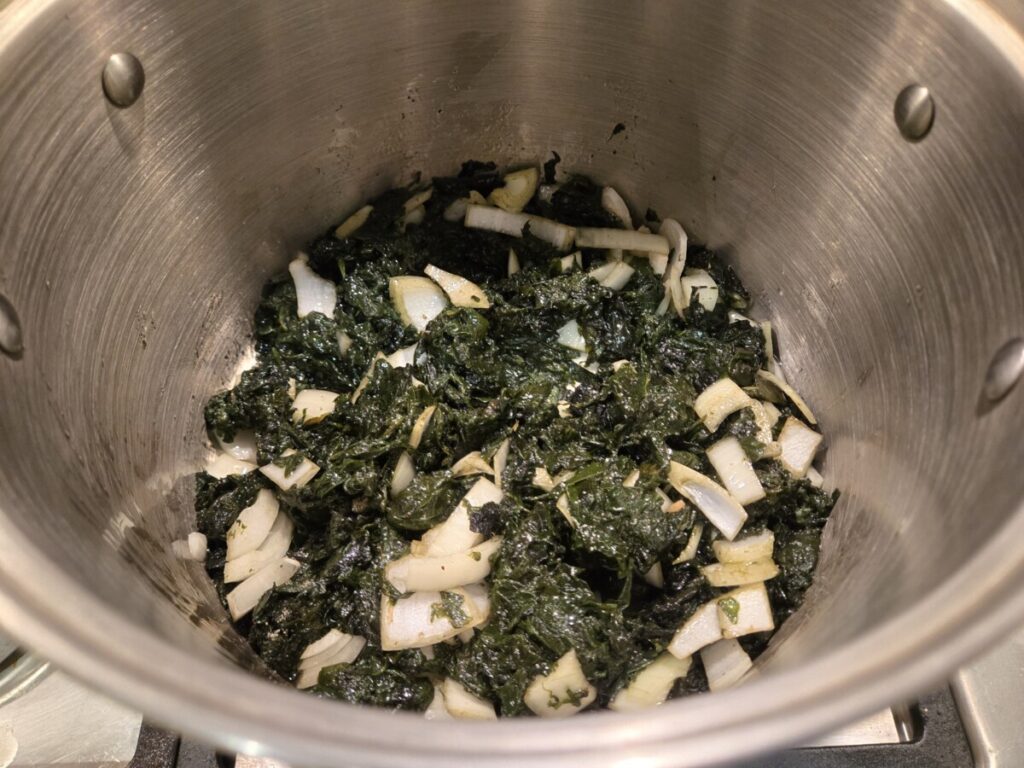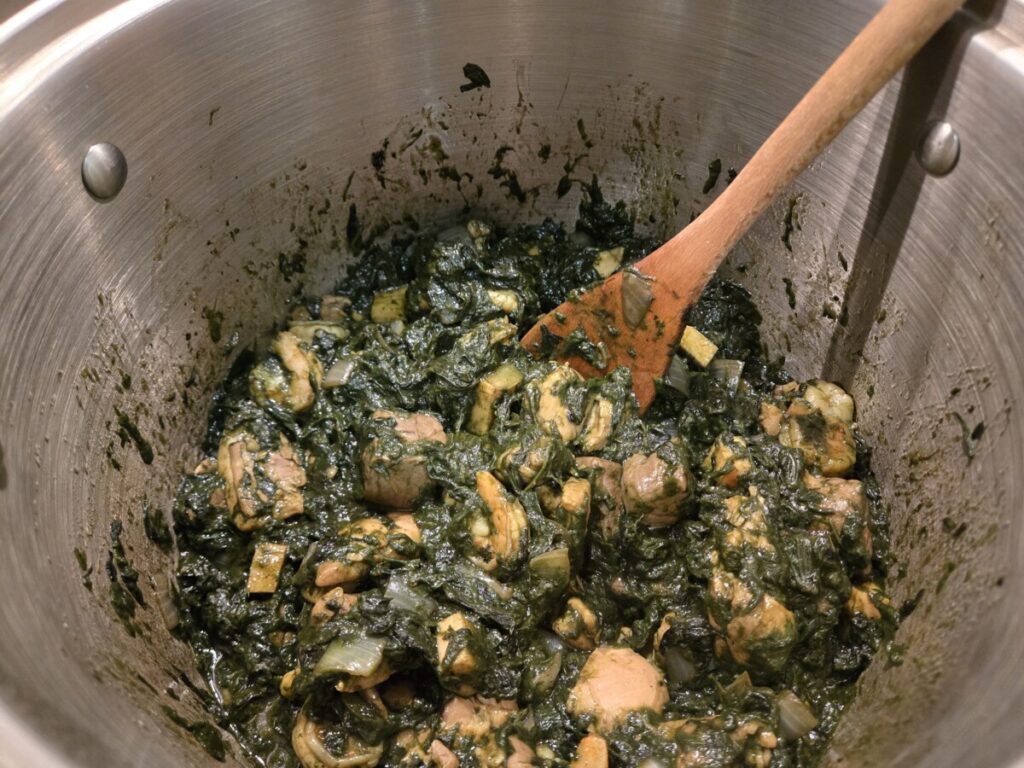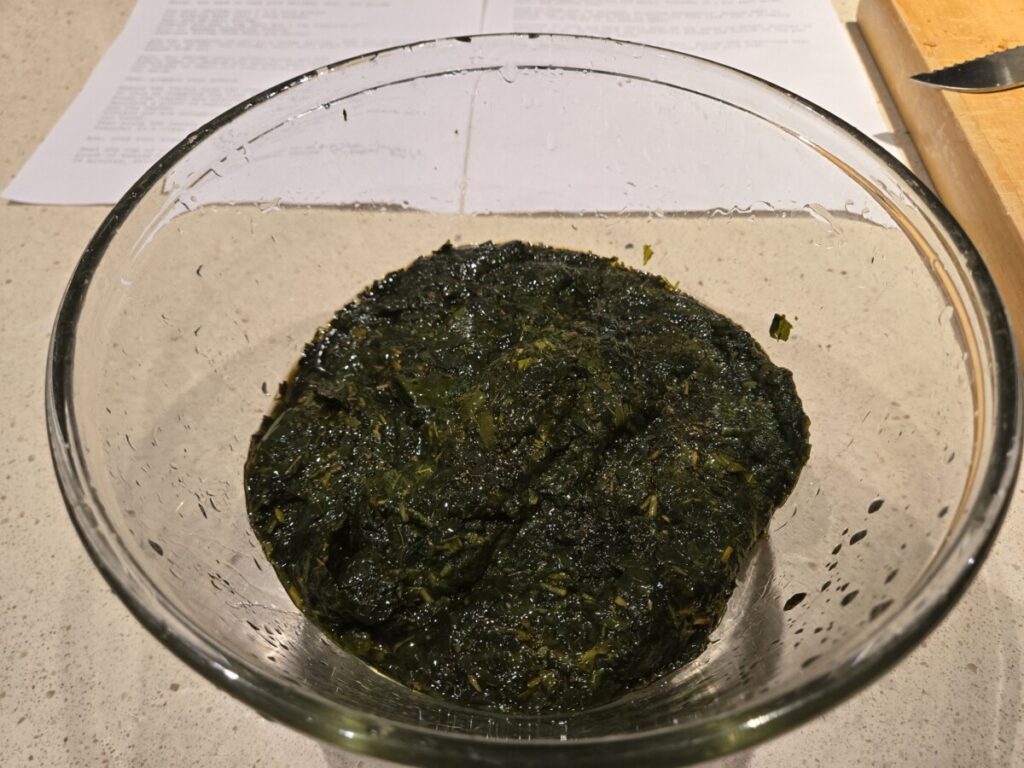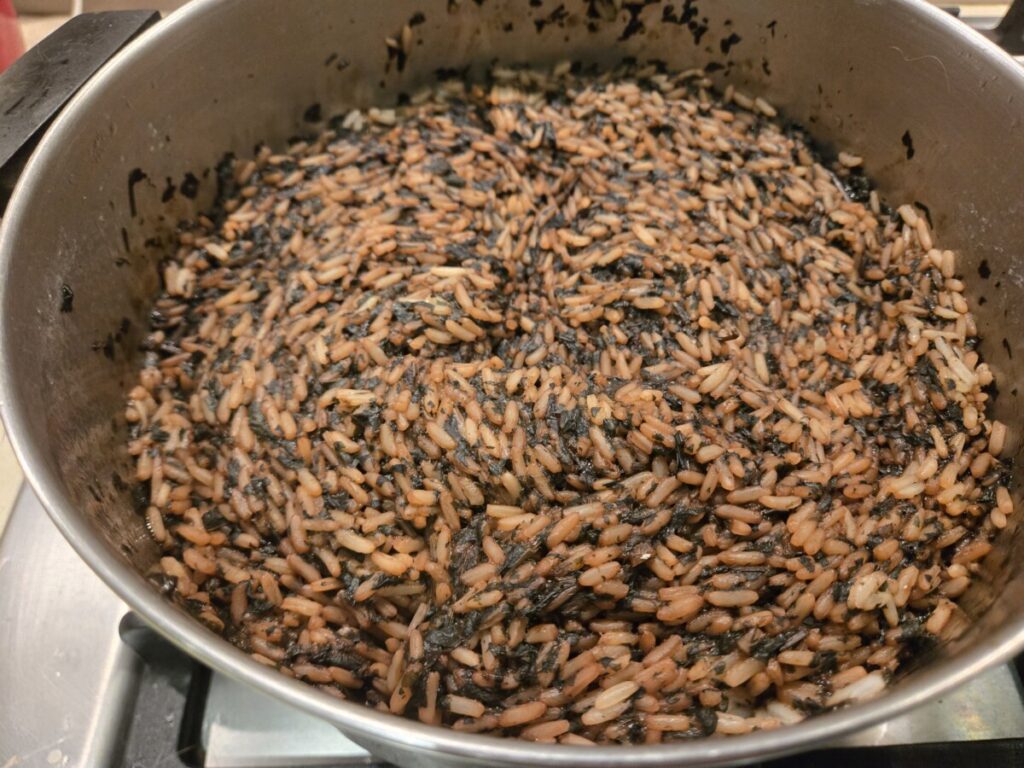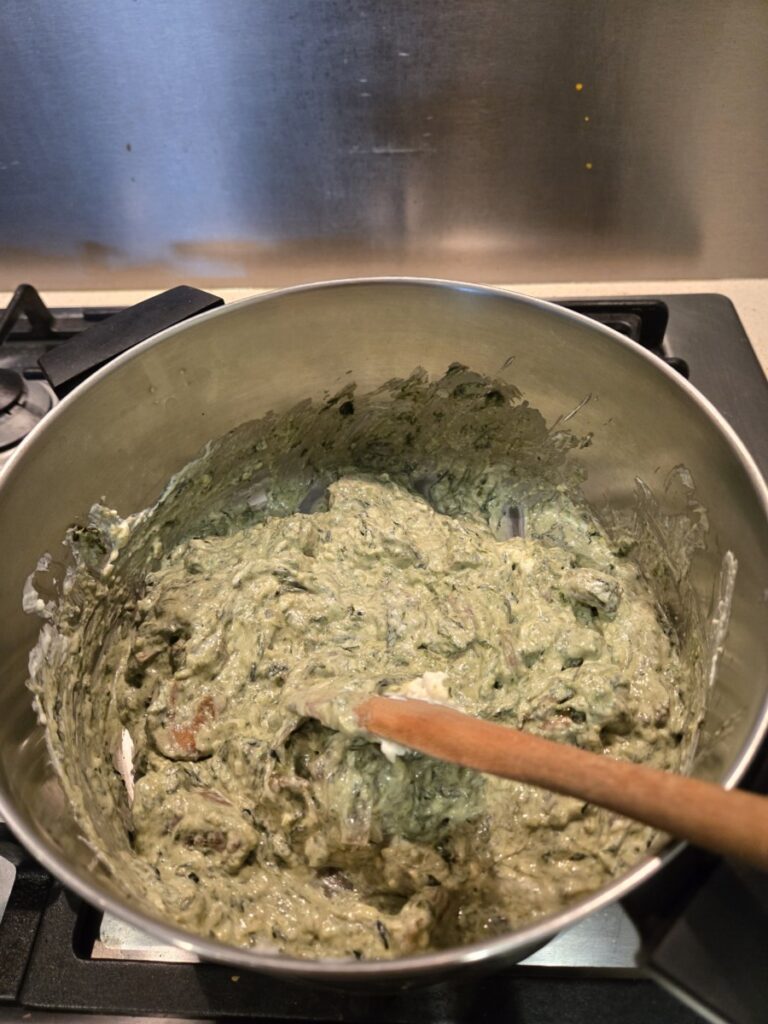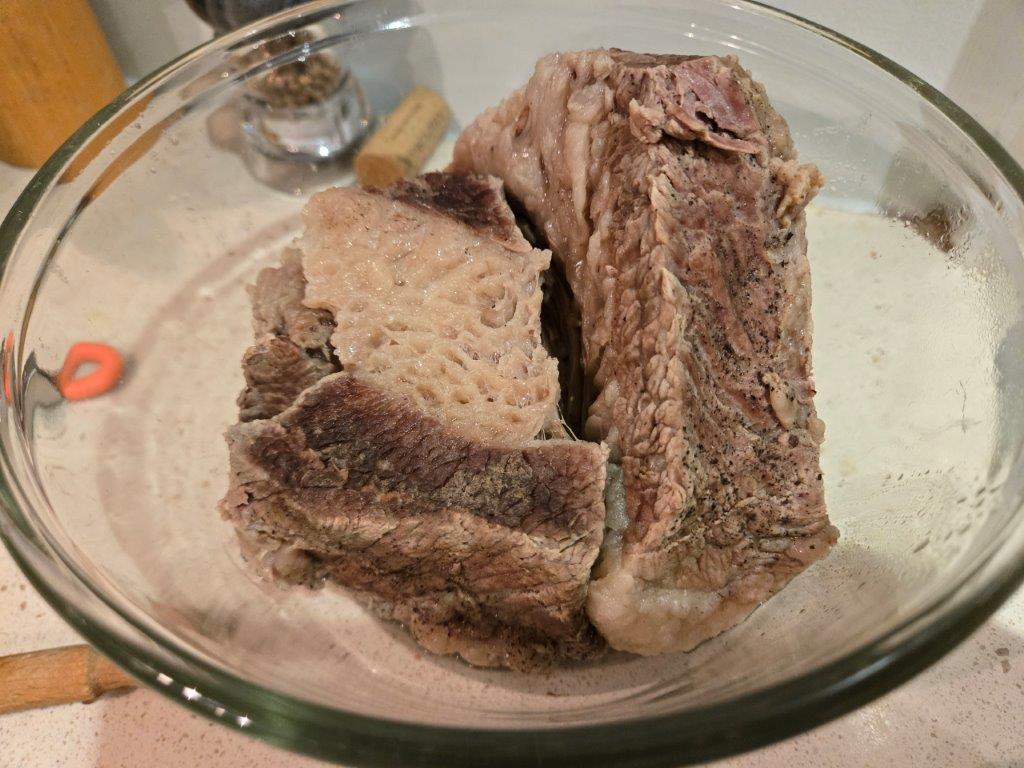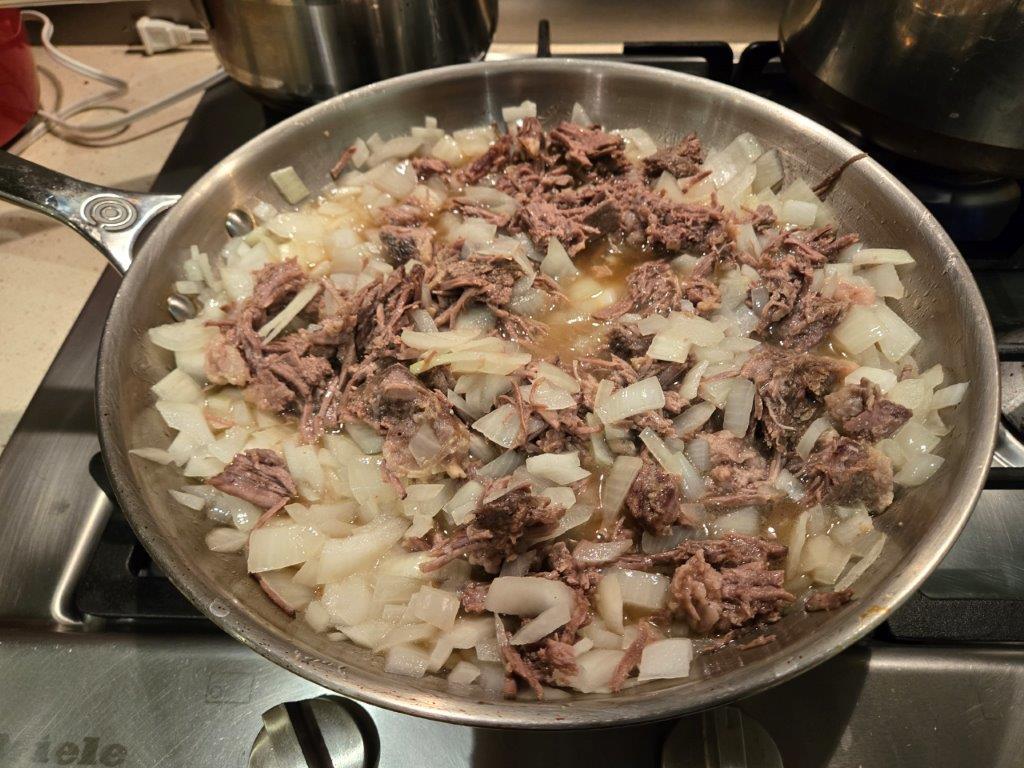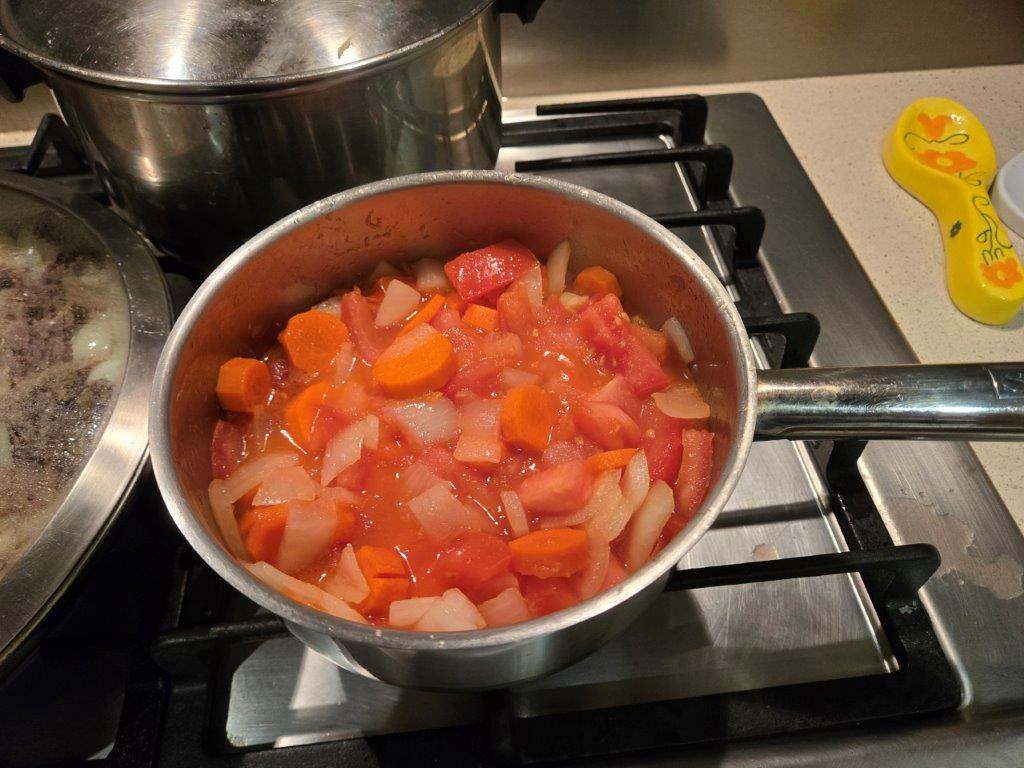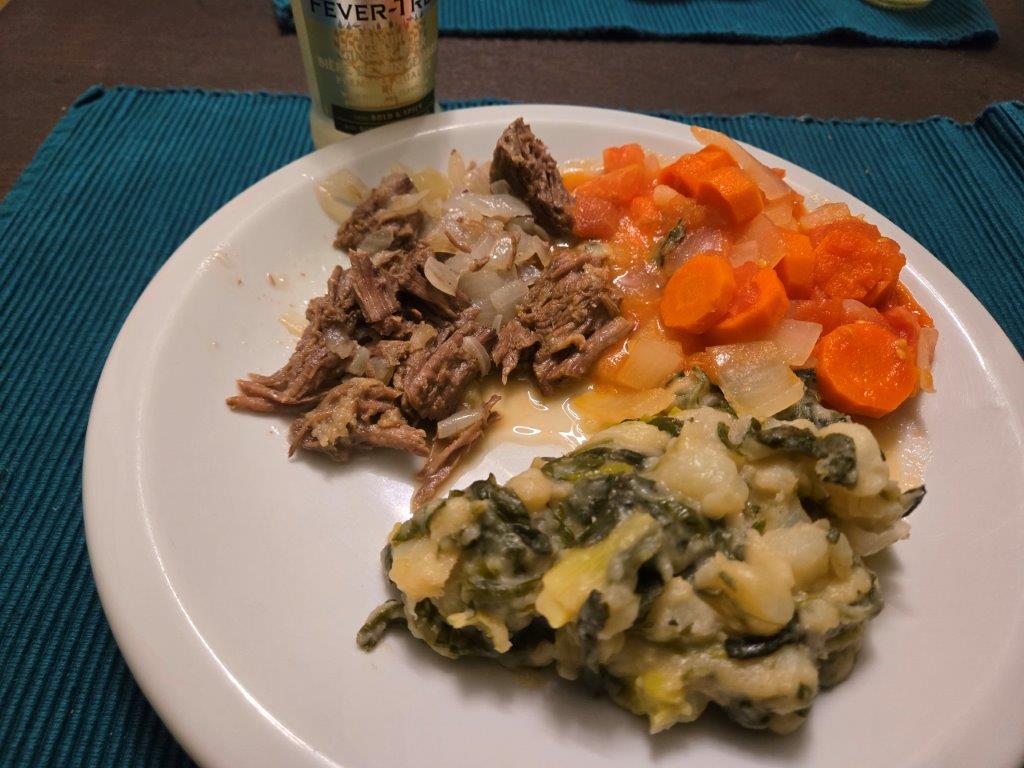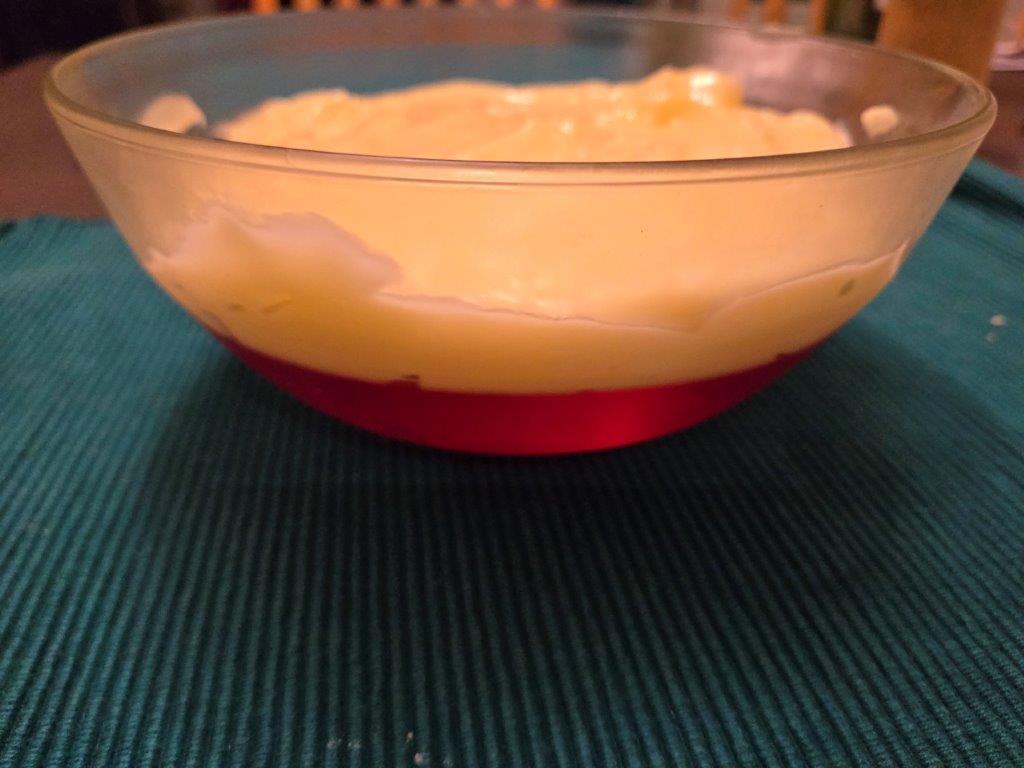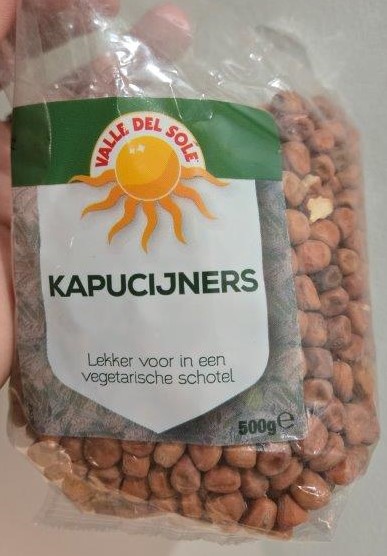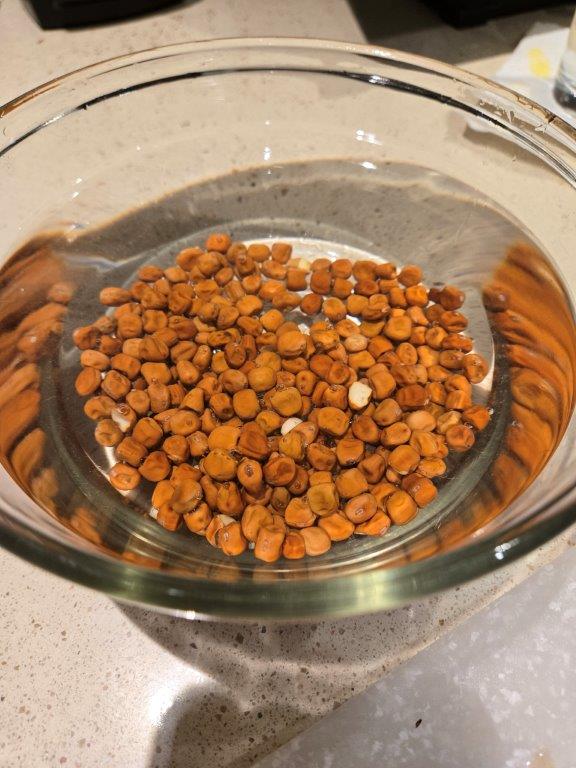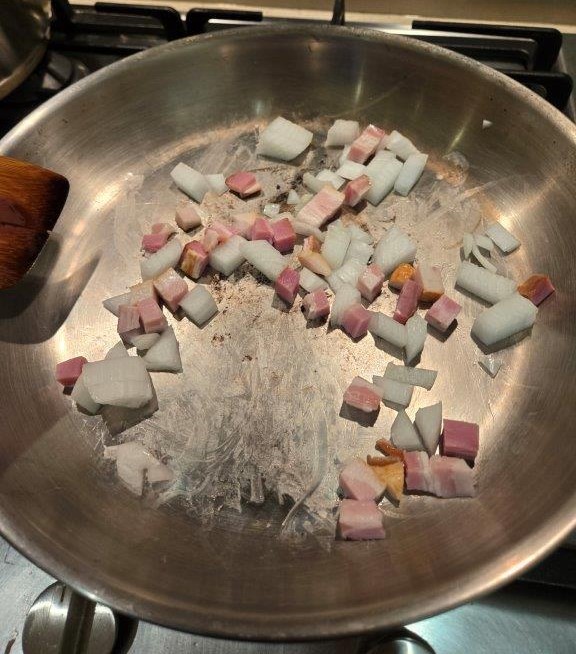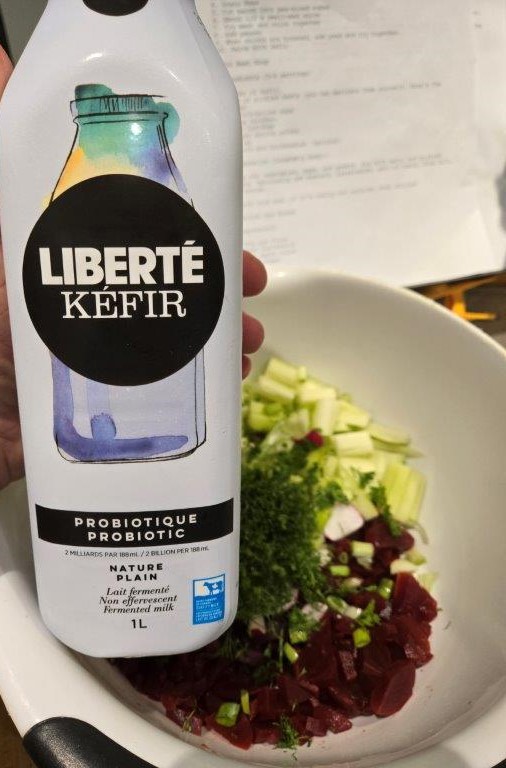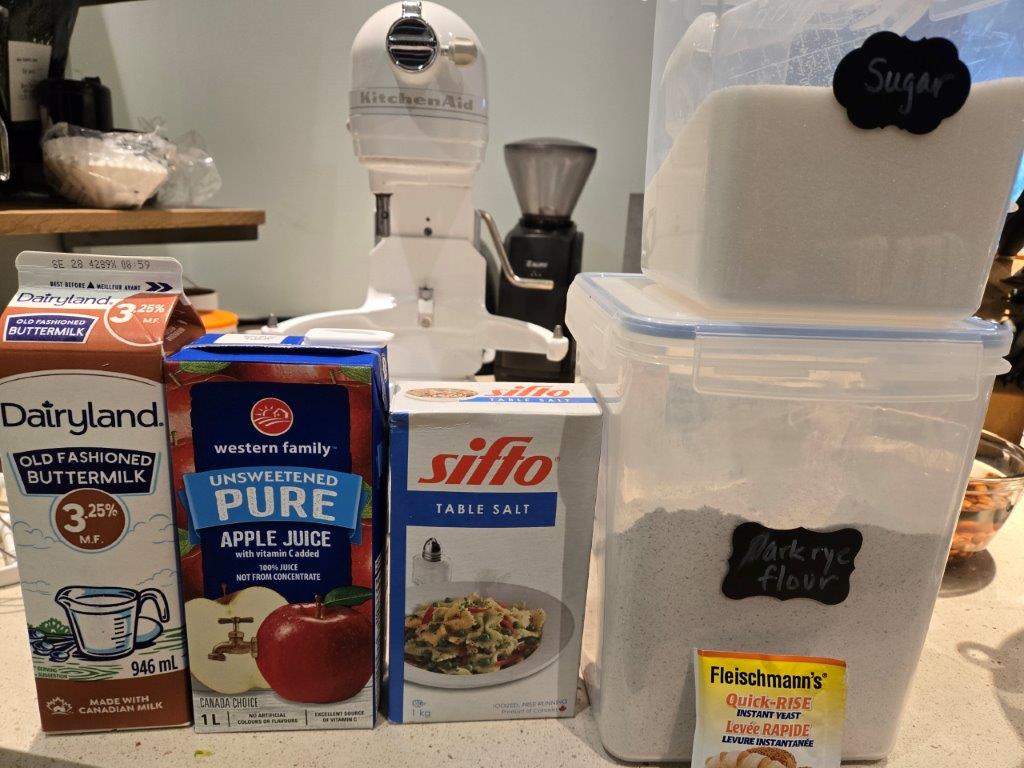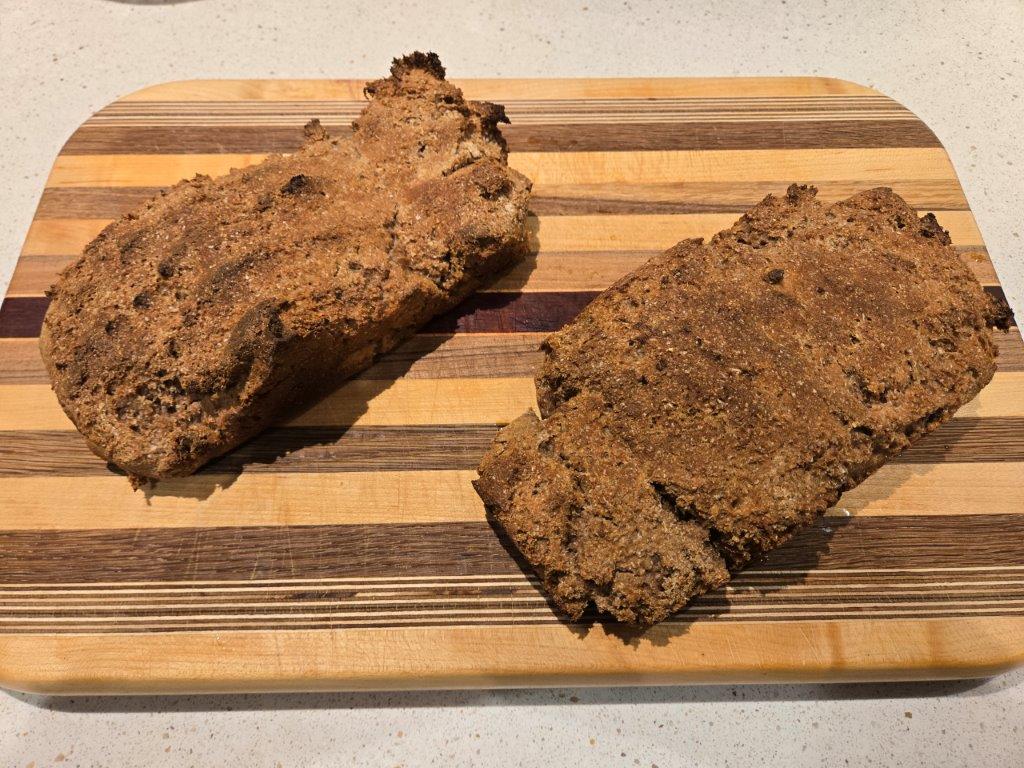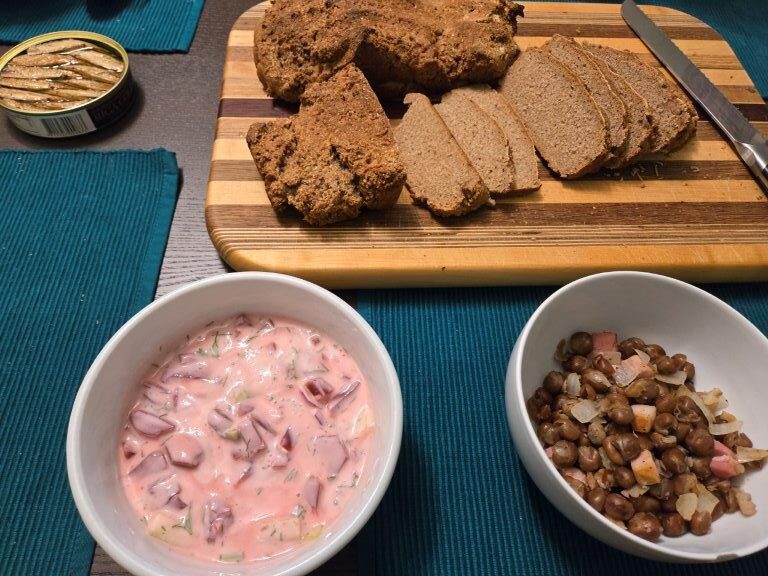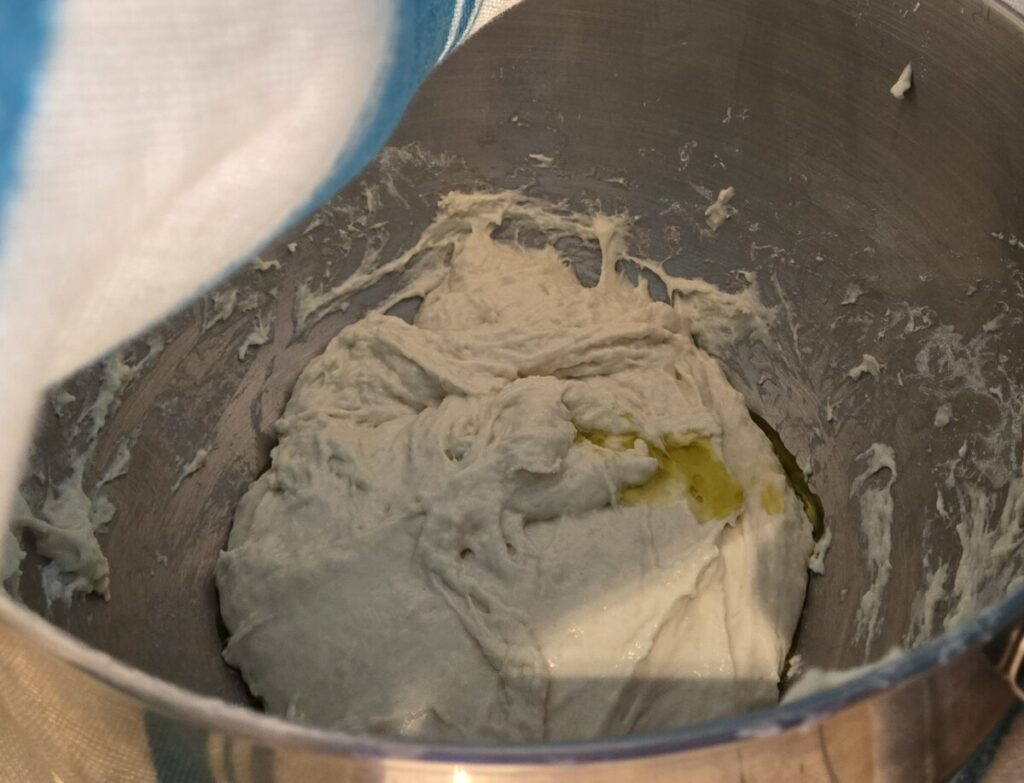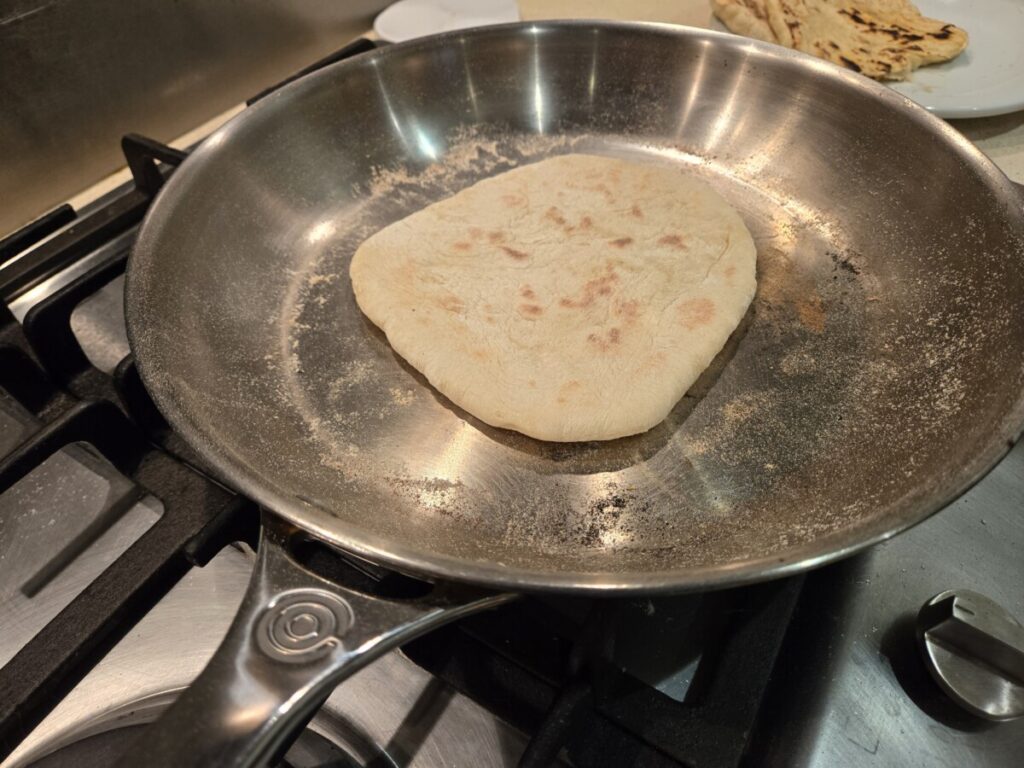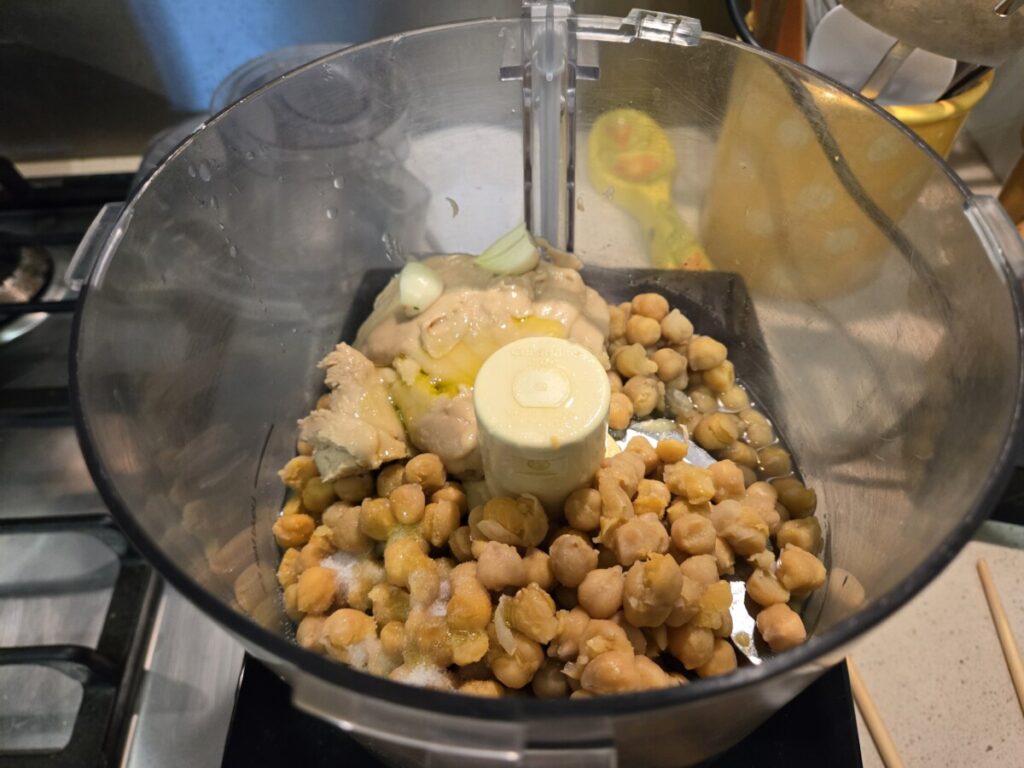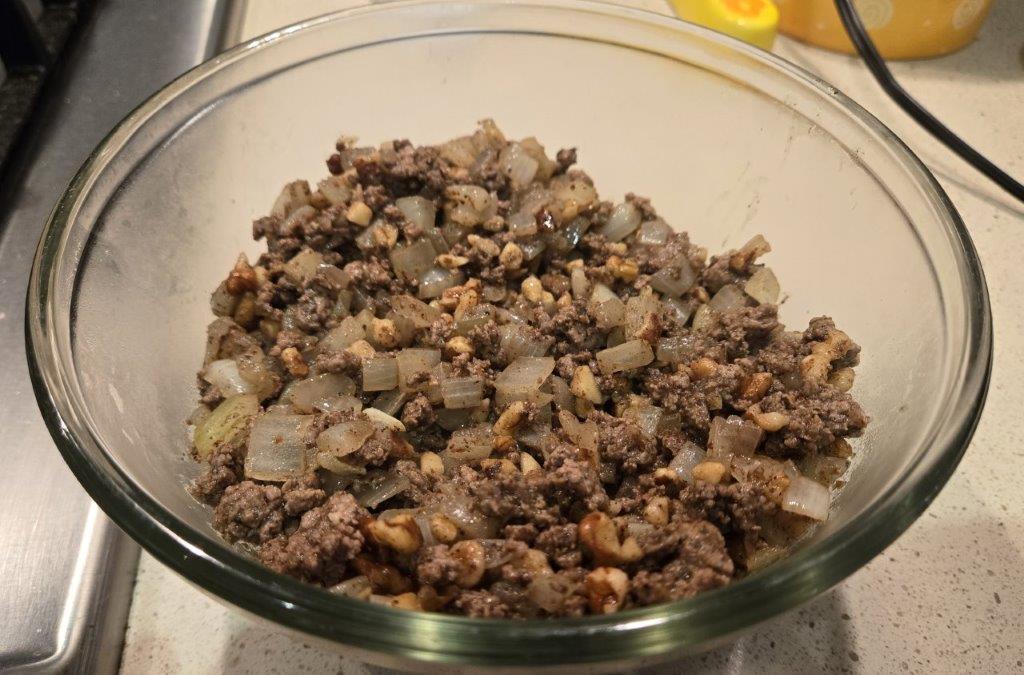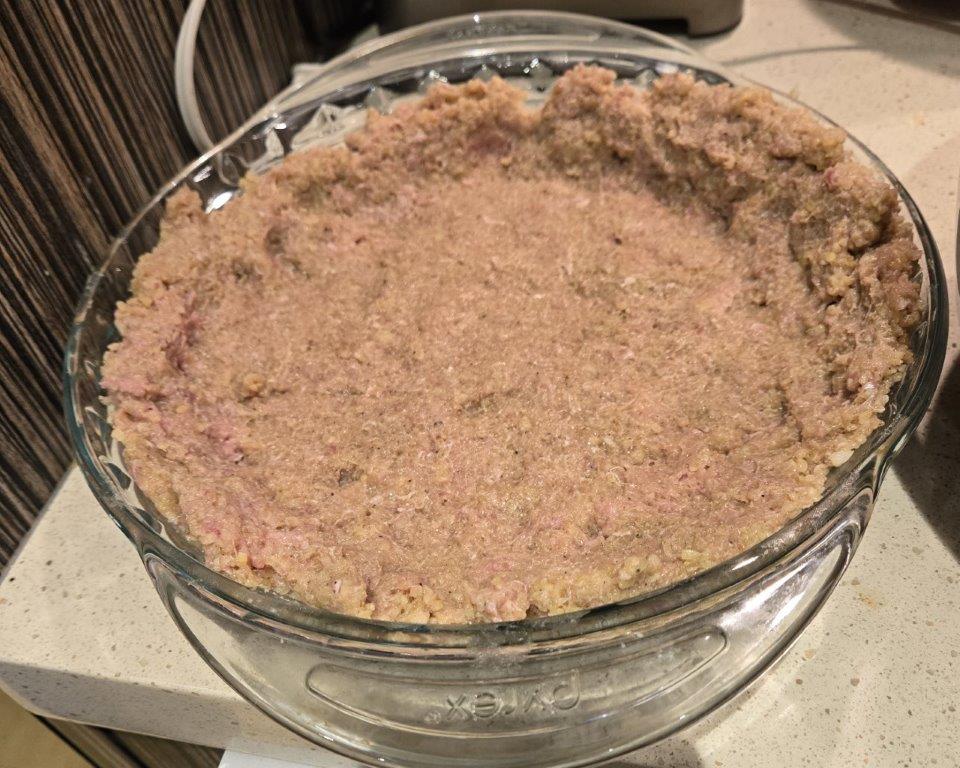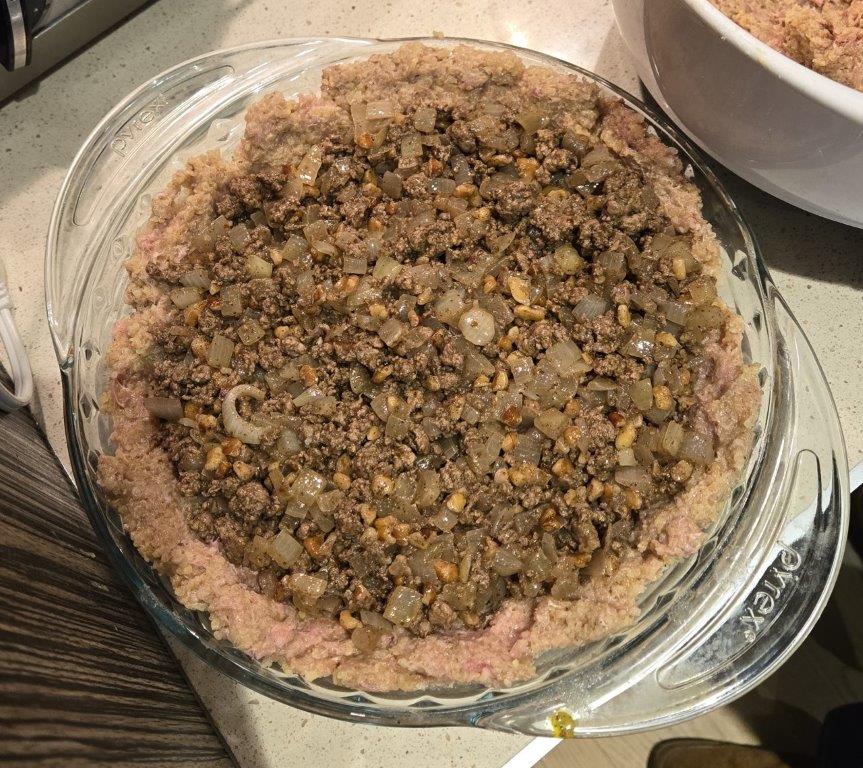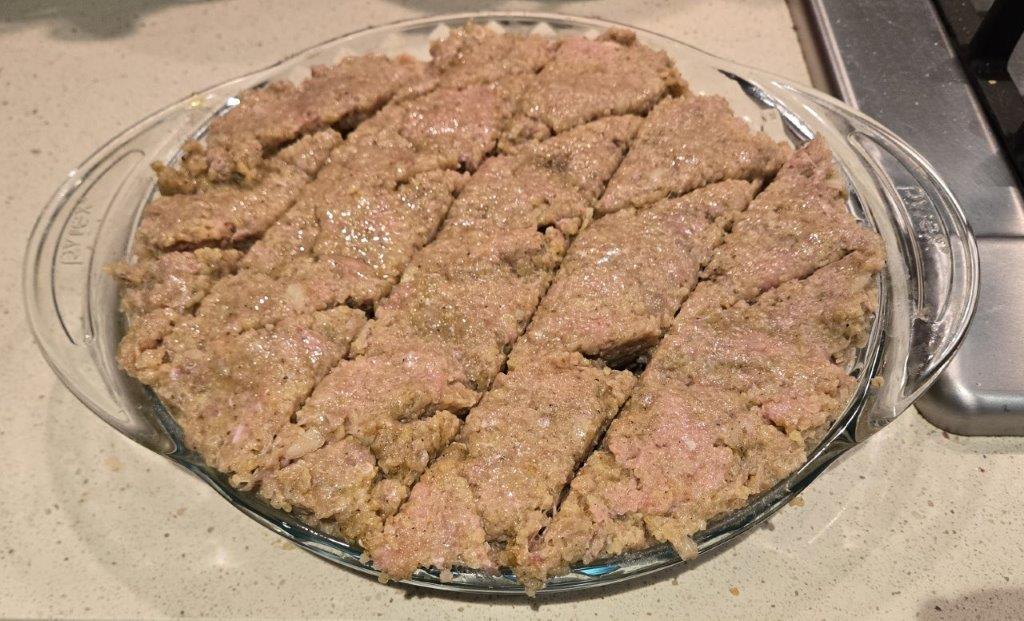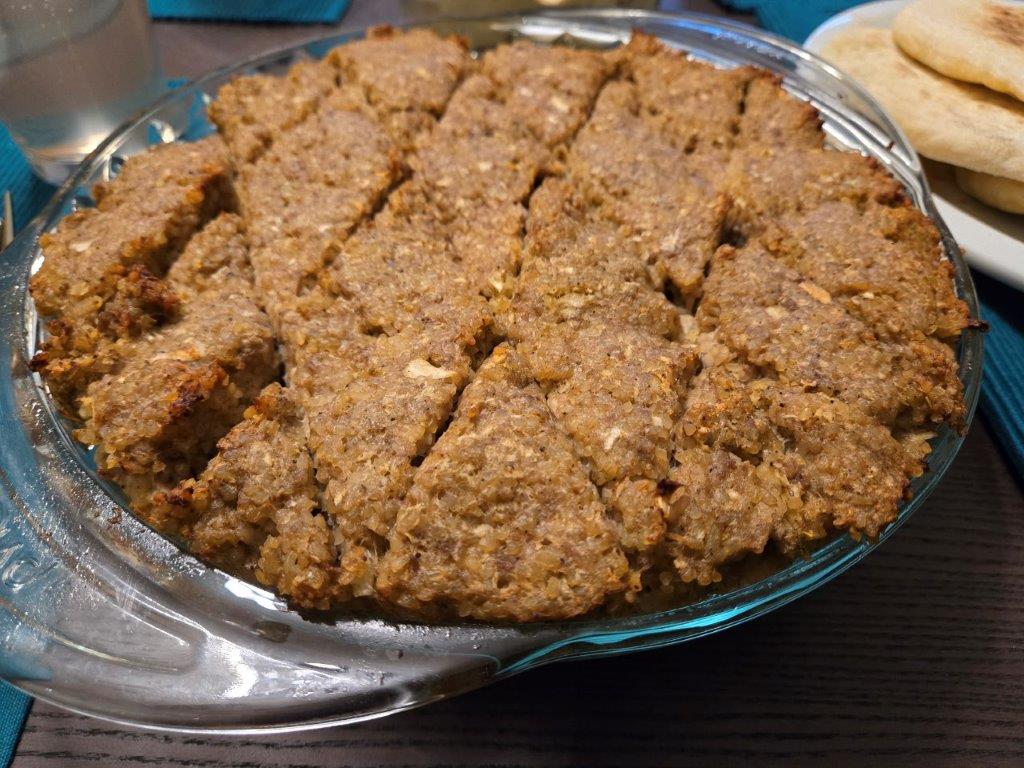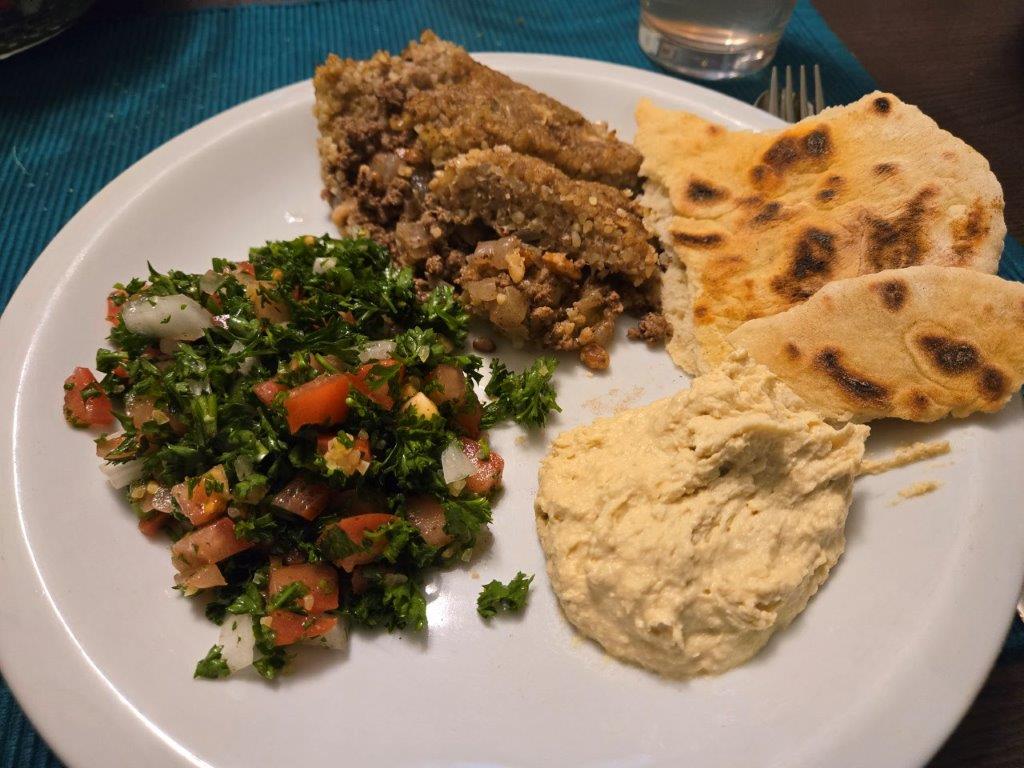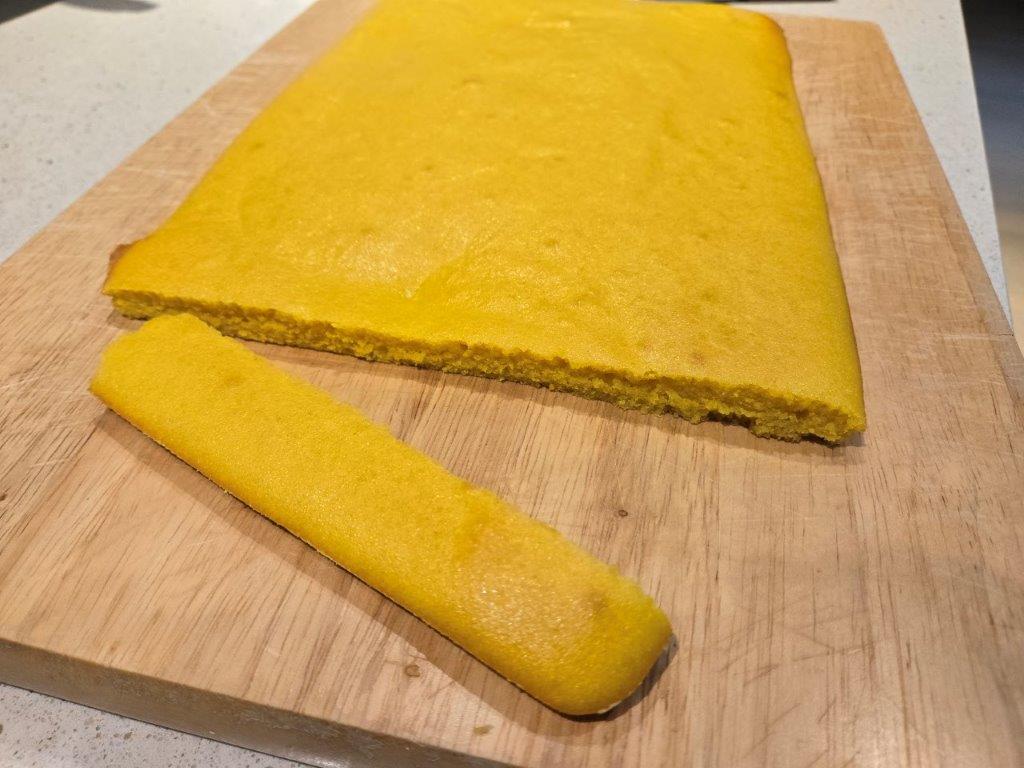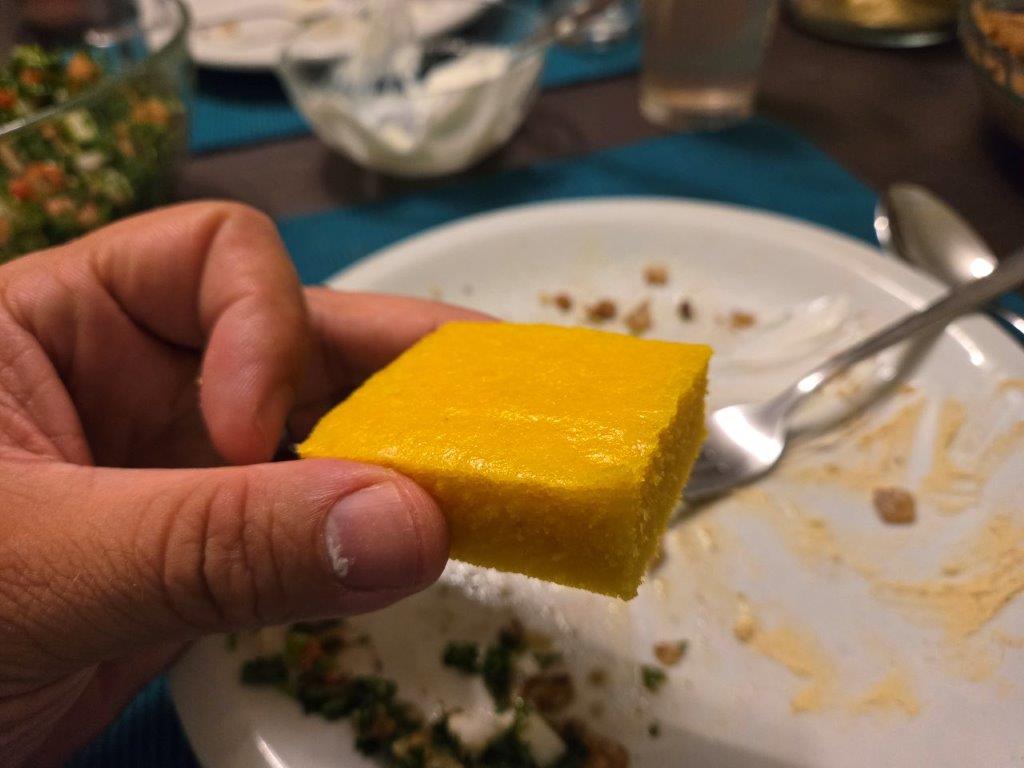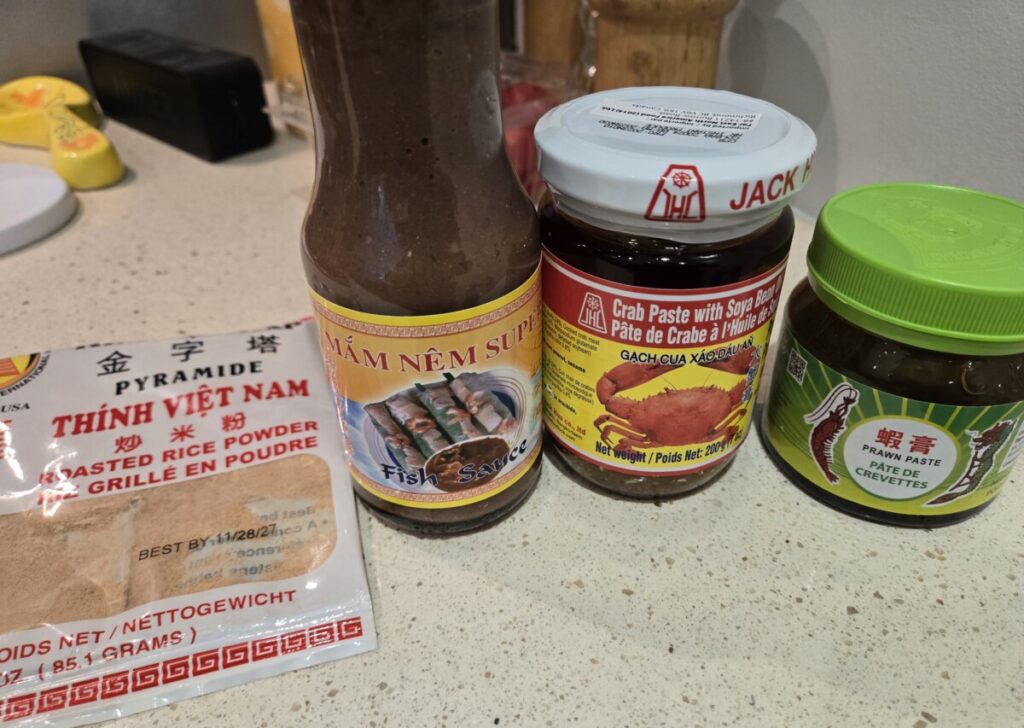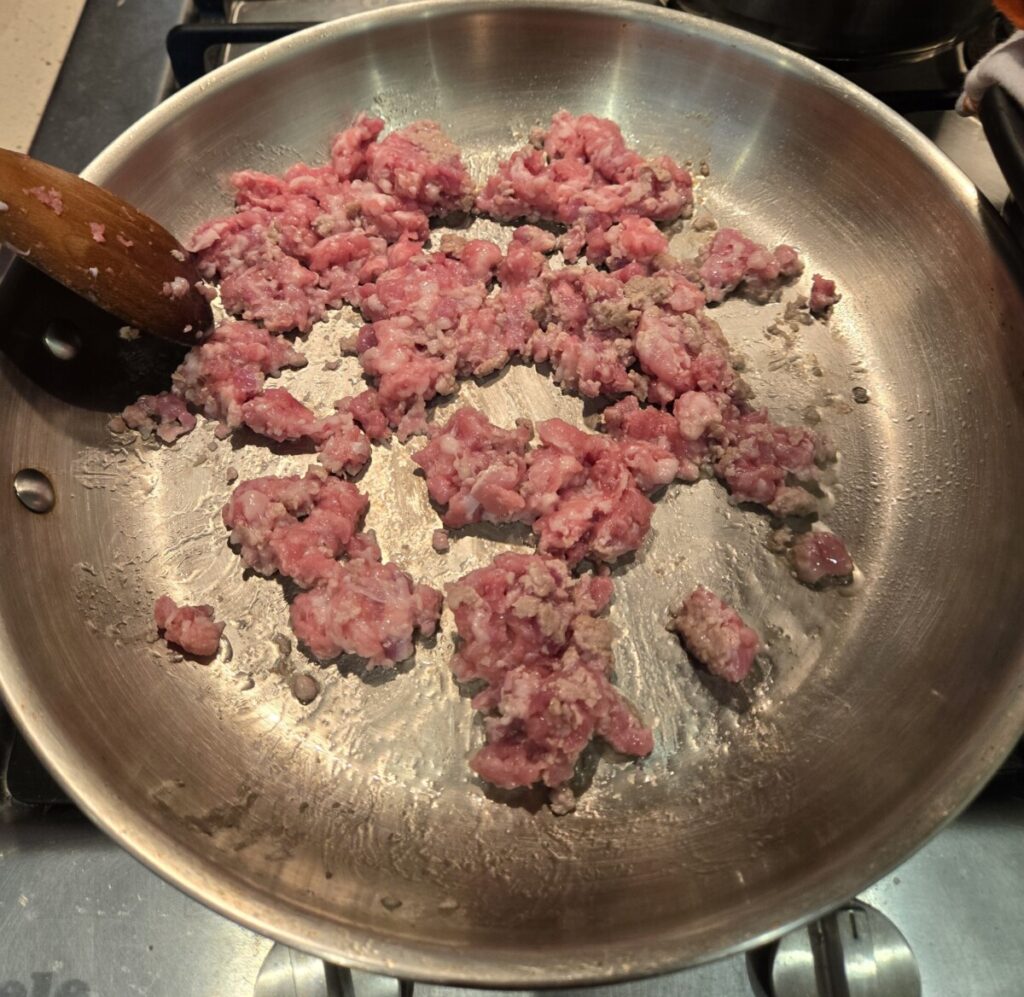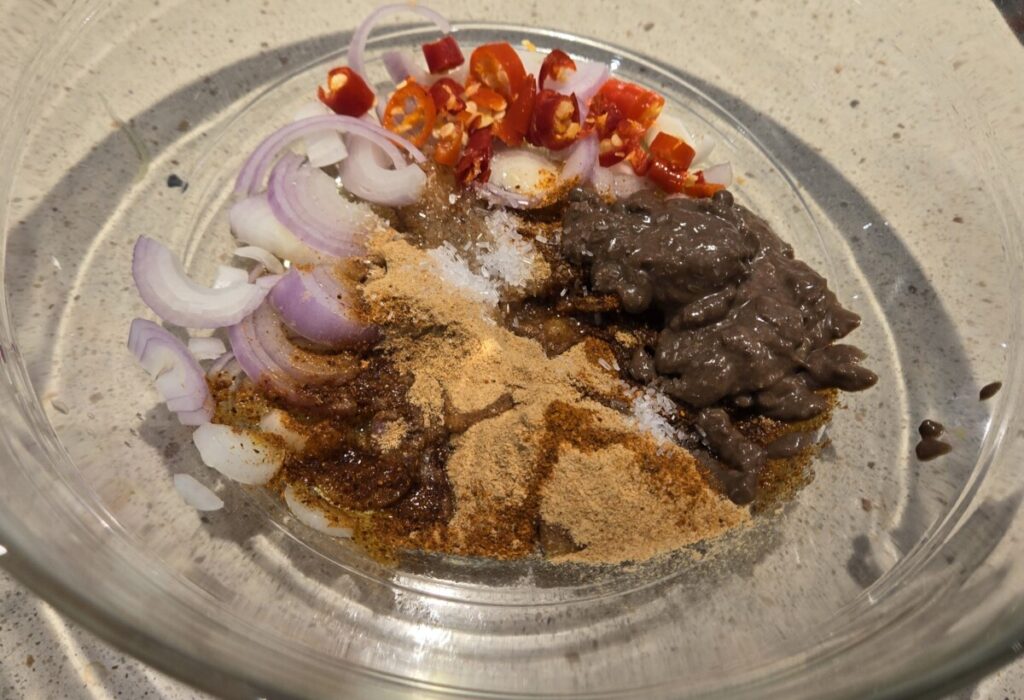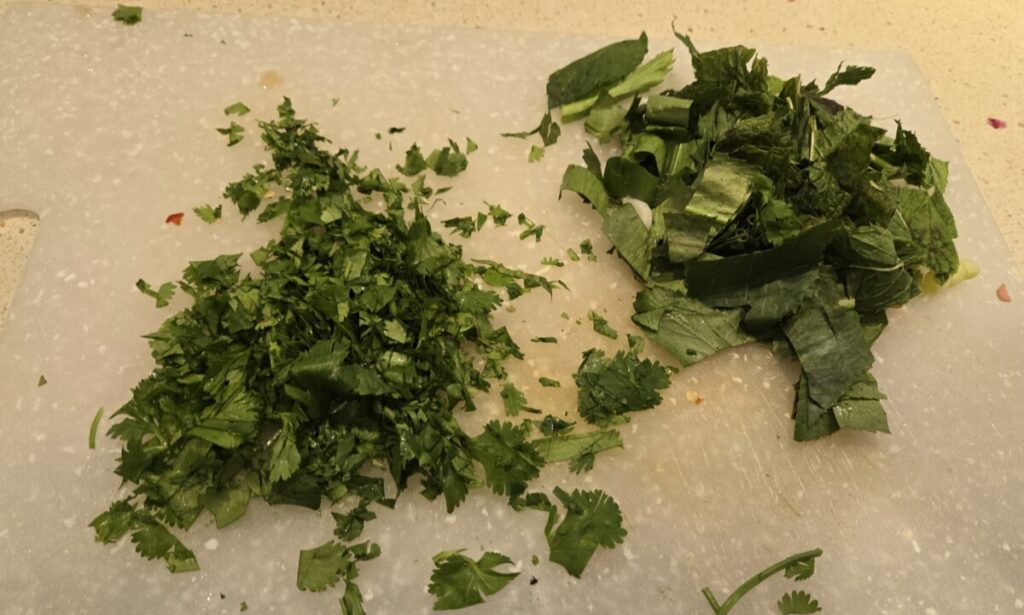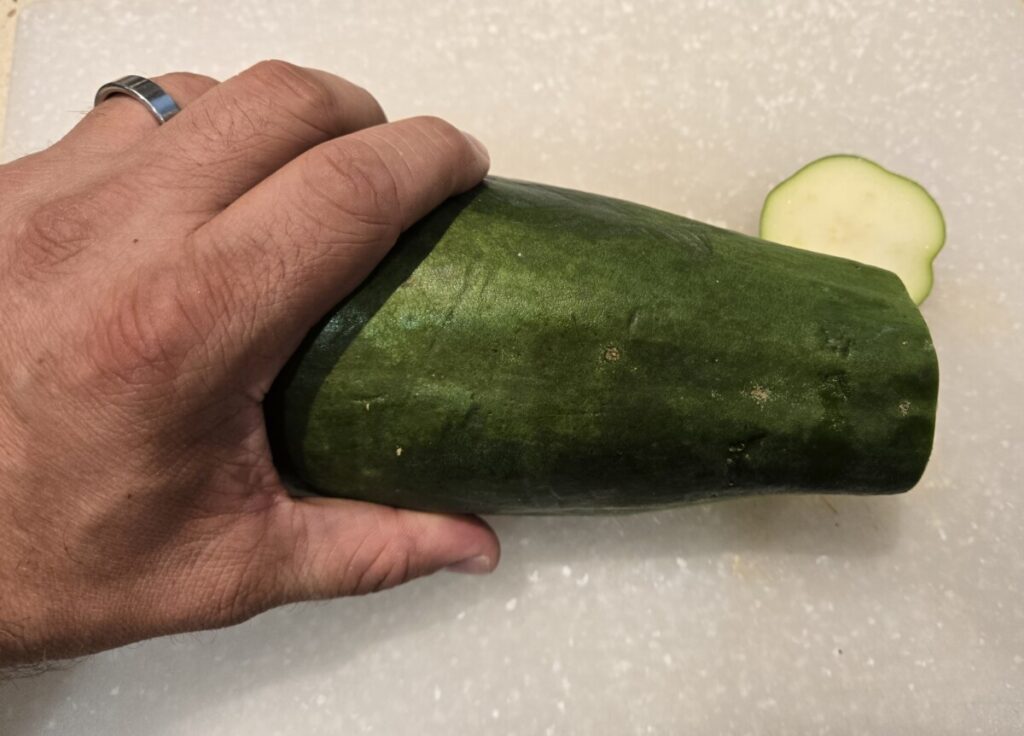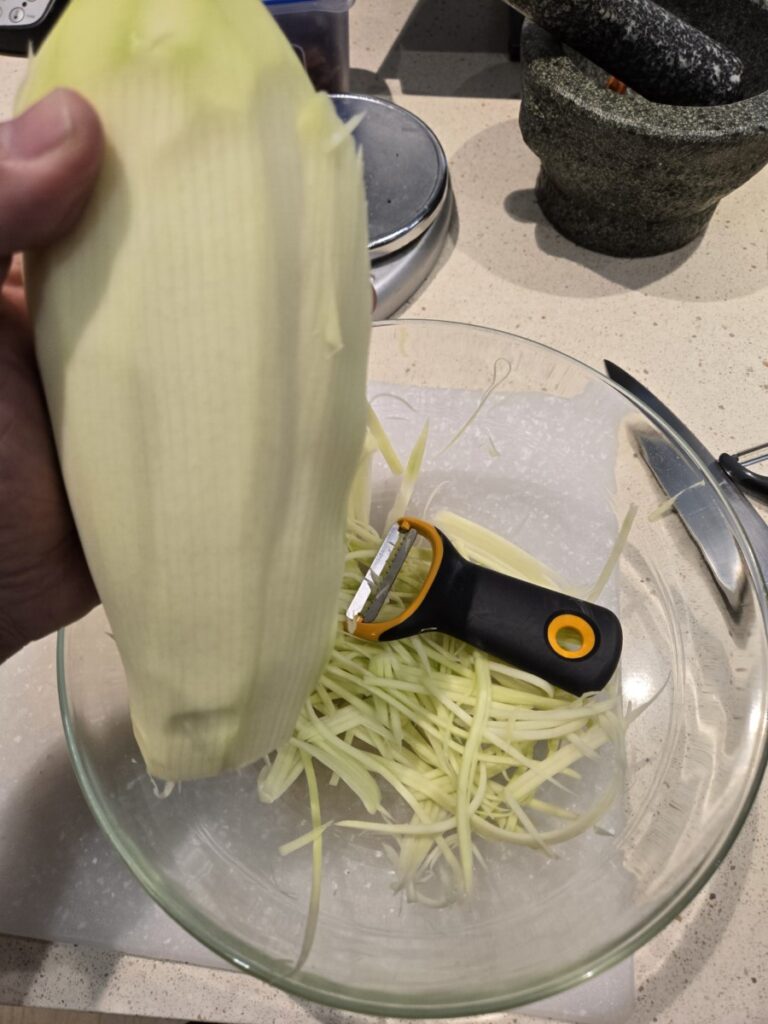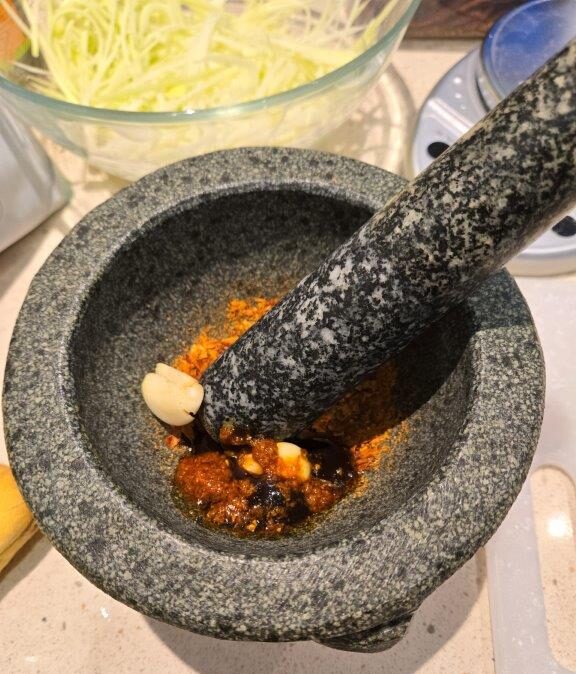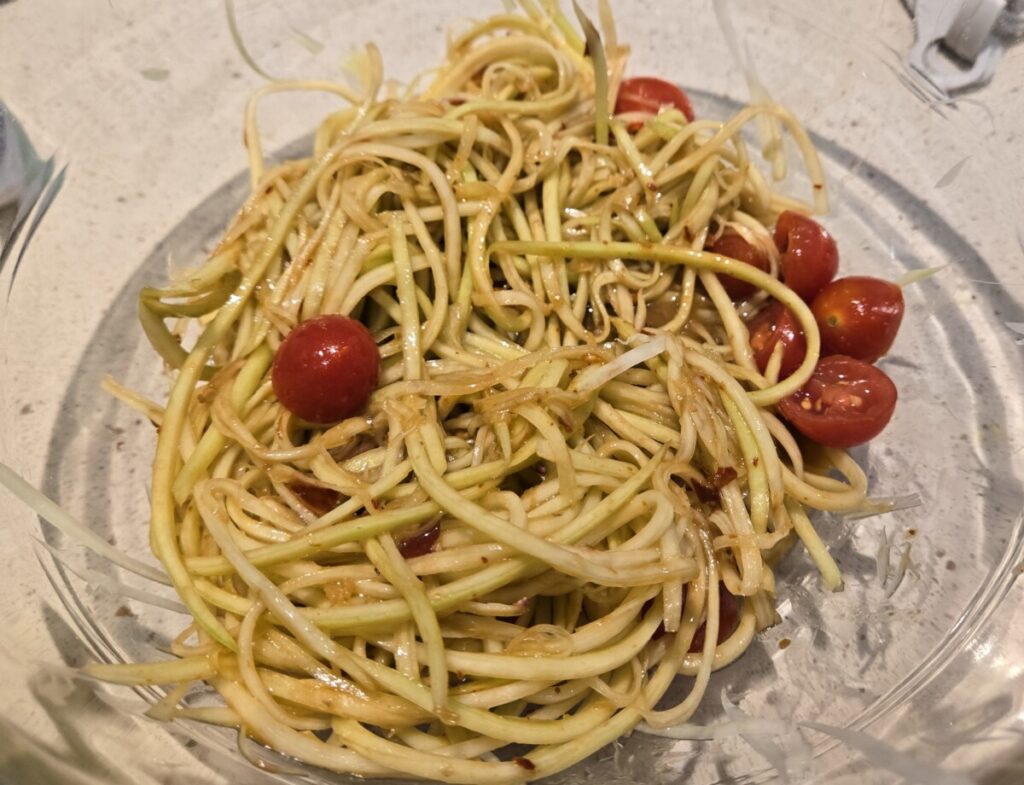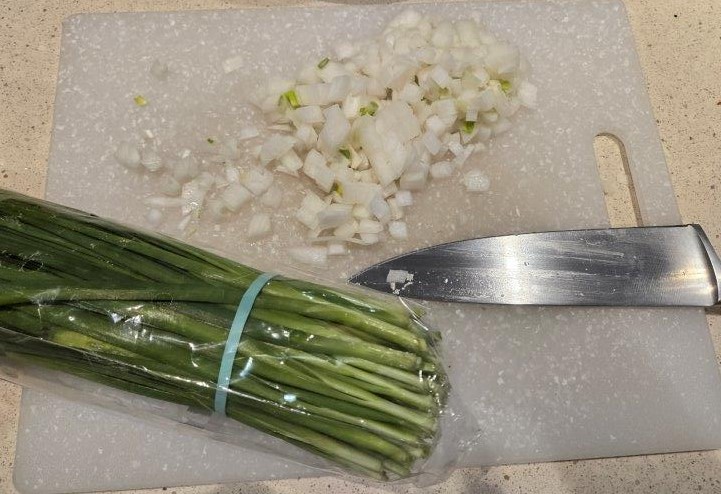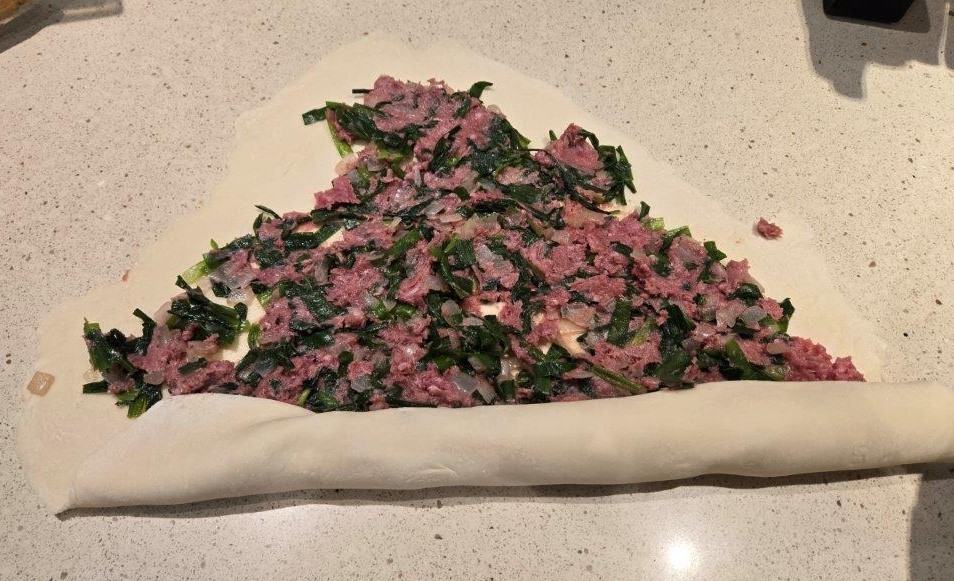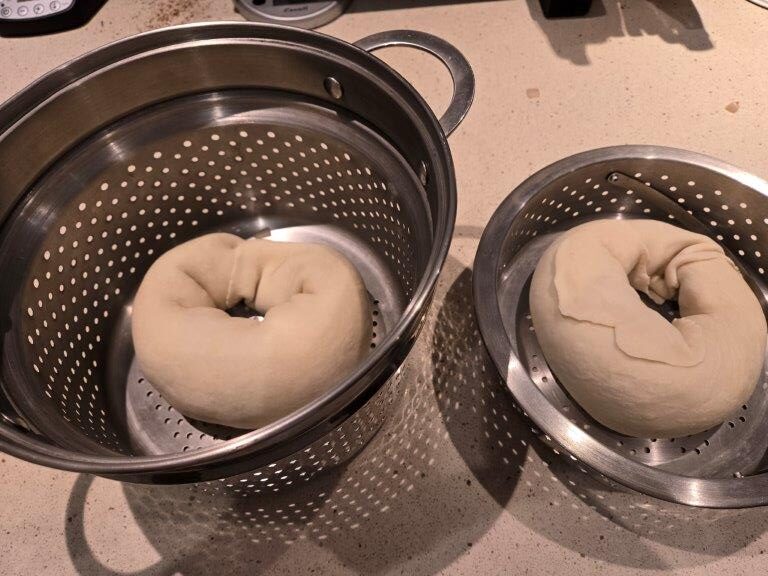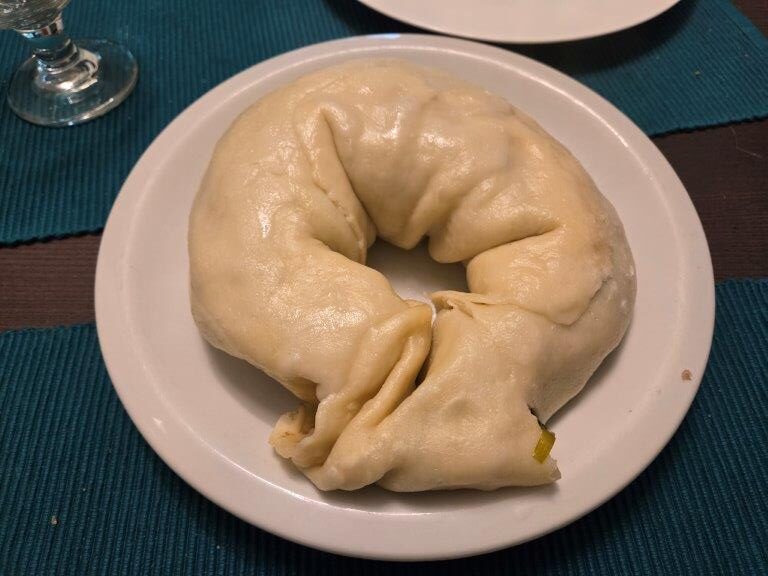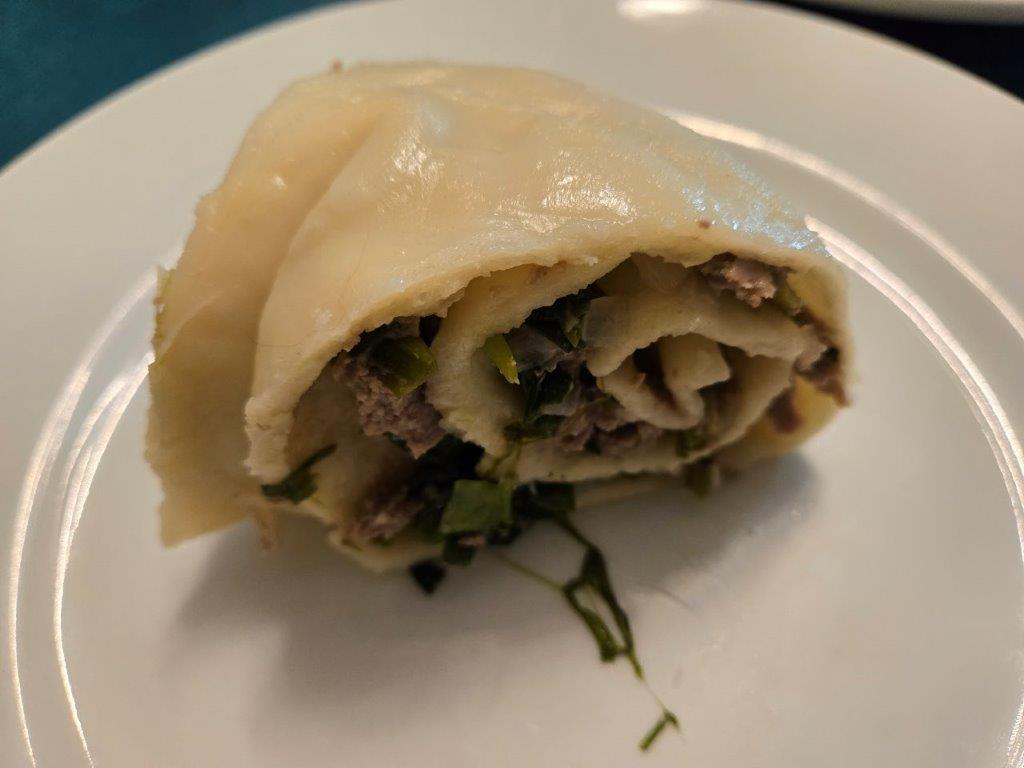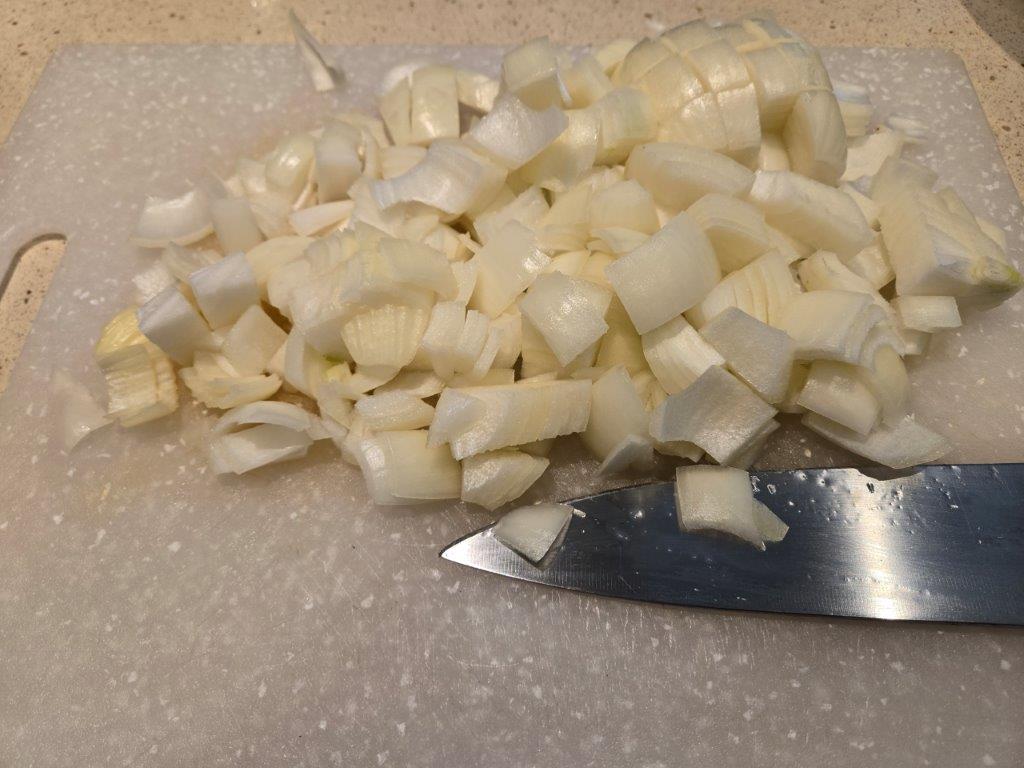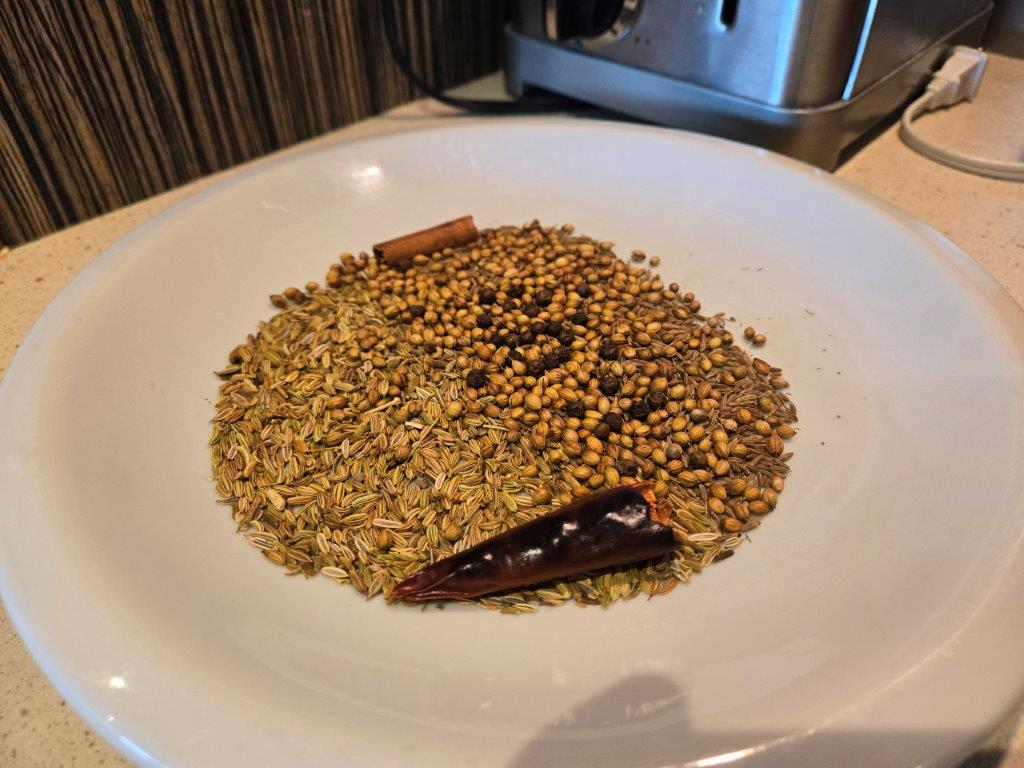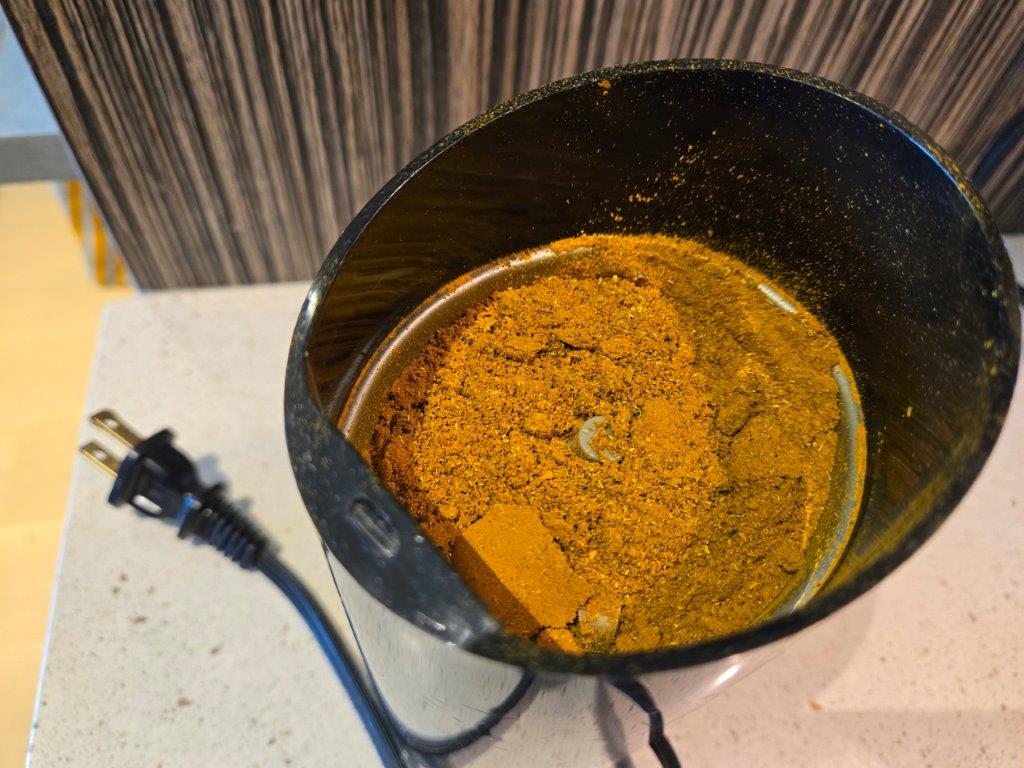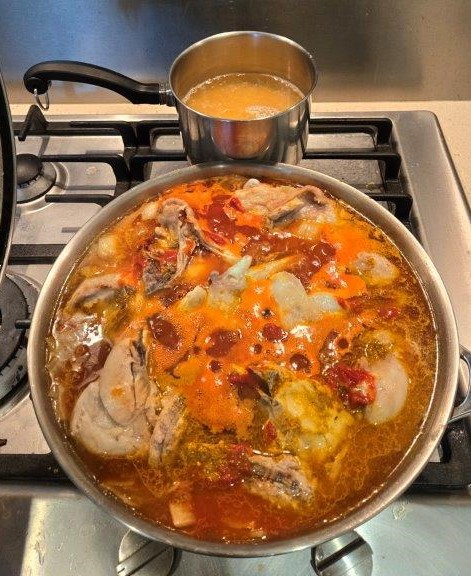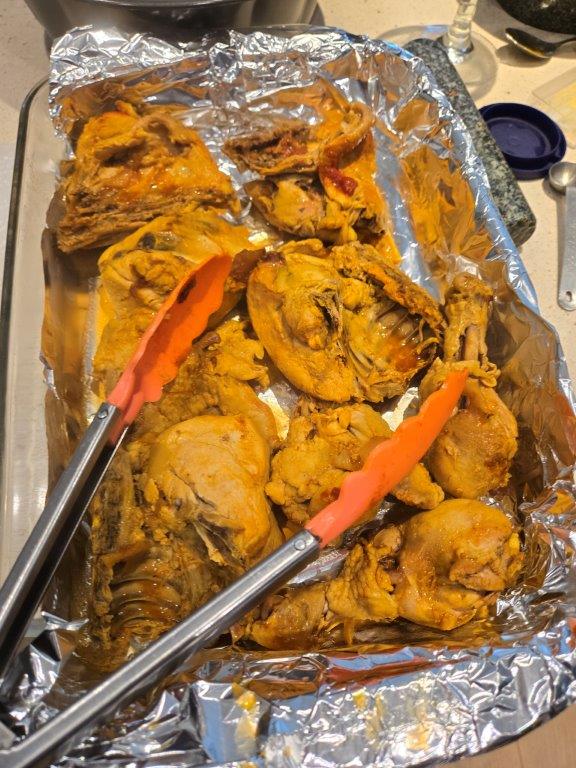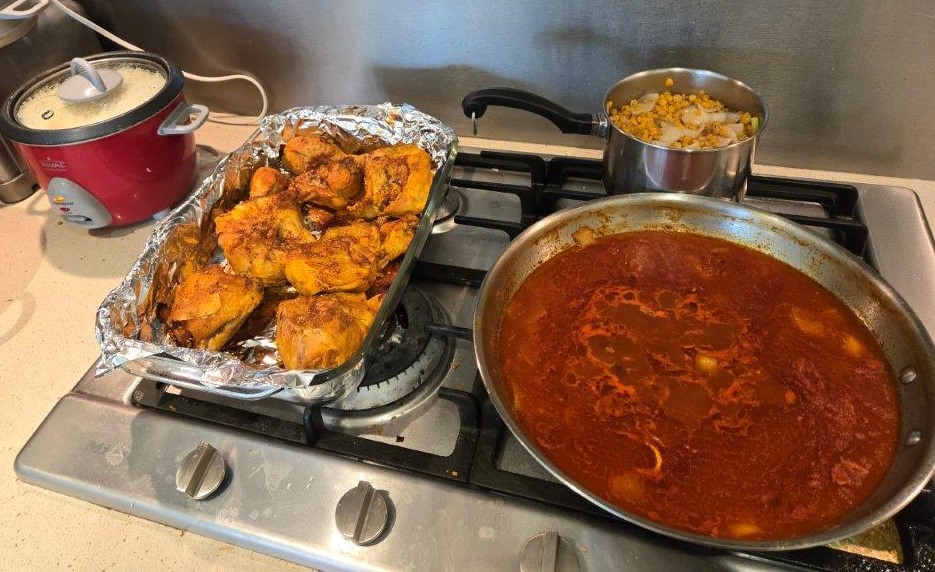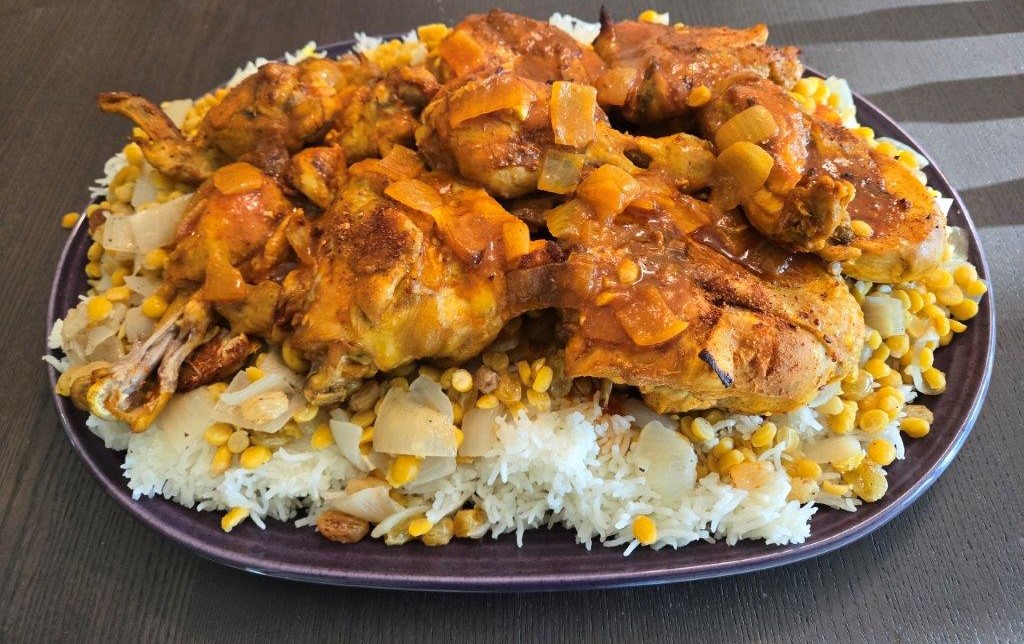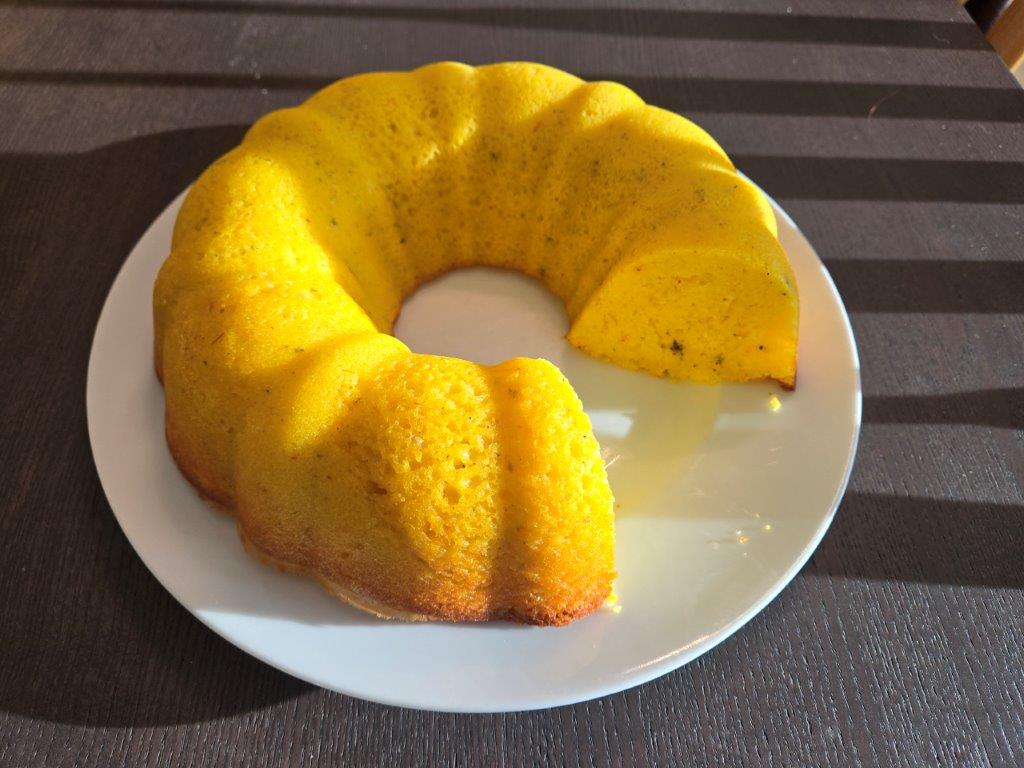Some of these meals go better than others.
Sometimes it’s clear we’ve made pretty close to exactly the dish that was intended, and we decide that it’s just not our favorite. No shade on national foodways, just individual preferences.
And sometimes it’s clear that we just didn’t get there.
This, friends, is one of the latter. I’m pretty sure we hit the flavor spot on (and the flavor was great!) but in terms of appearance or composition?
Well, the salad was pretty close, anyway.
So – Lithuania. The third of the three Baltic states, along with Estonia and Latvia. The national dish is something called a Cepelinai, which literally means “Zeppelin.” That’s right – we’re making potato blimps!
First off, you make a fairly simple filling of pork and onions.
Pretty typical fare for a pork meatball. Just for variety, let’s NOT take a picture of chopping an onion. After all, this filling isn’t precooked – it’s just mixed together and left to chill a bit while you mess with the potatoes.
SO MANY POTATOES.
First, you take a small quantity of potatoes, boil and rice them Ricing a potato is a task made much easier by a tool called a potato ricer. Which we don’t have.
Then you take a lot MORE potato and you shred it. And I think this is where we went wrong. We used the “grater” attachment on our food processor to grate the potatoes, because who has time to hand grate four entire Idaho Russets with a microplane?
People who actually know how to make Lithuanian food correctly, that’s who. Although the shredded potatoes matched the images in the recipe we were using, when I went and checked a few more sites, their shreds were much smaller than the ones we got.
Another possible point of failure is the next step, where you take that shredded potato and attempt to squeeze out as much moisture as you possibly can. Ideally using cheesecloth. Which we also didn’t have.
Using a dishtowel and a TON of arm force (seriously, between this and last week, why aren’t I buff yet?) we got out quite a bit of liquid, but possibly not enough. It’s also possible that the potato starch that was supposed to be in the liquid got trapped in the towel, because when we tried to pour off the liquid and keep the starch we didn’t get much.
We also may have just done a crap job of pouring off the liquid.
So at any rate, we now have a bowl of riced potatoes, a bowl of dry potato gratings, and a (very small) bowl of potato starch. Those then get recombined together to make the cepelinai dough.
We then make large dumplings out of this dough and the pork filling.
A layer of dough, a dollop of filling, combine and you have your Zeppelins:
Now obviously, these are called Zeppelins because they are quite large for a dumpling. But honestly, if I had to describe their size and shape, something else comes to mind. What was it, again?
Oh right. A potato.
Seriously, we just painstakingly disassembled a whole pile of potatoes just so we could reassemble the same number of potatoes, but with meat inside. Cool.
And if we had stopped there, our dumplings would have looked more or less exactly like the ones in the recipe, just MASSIVELY less safe to eat. However, we decided that we would prefer our pork cooked, and not knowing what was in store, we tossed these into boiling water for 25 minutes.
While that was going on, we made the dressing and the salad. Remember earlier, when I said I wasn’t going to show a picture of chopped onions in this one?
I lied.
The dressing for these dumpling is made from bacon, onions, and sour cream. You try to time it so the onions and bacon are cooked just as the dumplings are ready, then you mix in the sour cream at the last minute and put the dressing over them. We did succeed at getting the dressing on the table at the right moment, and we put them over…
Well, let’s do the salad, first.
This won’t take long – it’s a simple chopped salad, so all we have to do is show the ingredients.
Prunes, walnuts, beets, lemon juice, and olive oil. In the summer, mayonaise would be more typical than the lemon juice / olive oil combination, but I think we’d probably still prefer this version.
OK, I can’t put this off any longer – what happened to the dumplings?
Well, whether it was insufficient potato starch, insufficiently riced potatoes, too large a grate size on the grated potatoes, too much moisture, bad assembly technique, or (most likely) a combination of all of those, they completely fell apart in the boiling water.
So instead of potato blimps, we had bare meatballs, floating in a pot of boiled potato shreds.
But to be clear – everything was still COOKED. You still had cooked potato shreds and a cooked meatball. So we just sort of made a big pile of stuff and dumped dressing on it.
Less, “Zeppelin”, and more “Hedgehog.” Google Translate helpfully informs me that the Lithuanian word for hedgehog is “ežys”. So we made that.
And you know what? It was delicious. Potato, pork, onion, bacon, sour cream? These are classic flavors, and they work no matter what kind of Erinaceidae you shape them like. And while I hadn’t had prunes in a salad before, this was an excellent combination. If we were to make this again (not unlikely), I would try to get some really good olive oil, as the flavor of the oil was well featured in the balance of flavors.
OK, Lithuania – we may have butchered your national dish, but it was still tasty nonetheless. Maybe you will try our Ežys version in the future?
Maybe not.
Next up: Luxembourg, and then on to the Ms!
Recipes:

